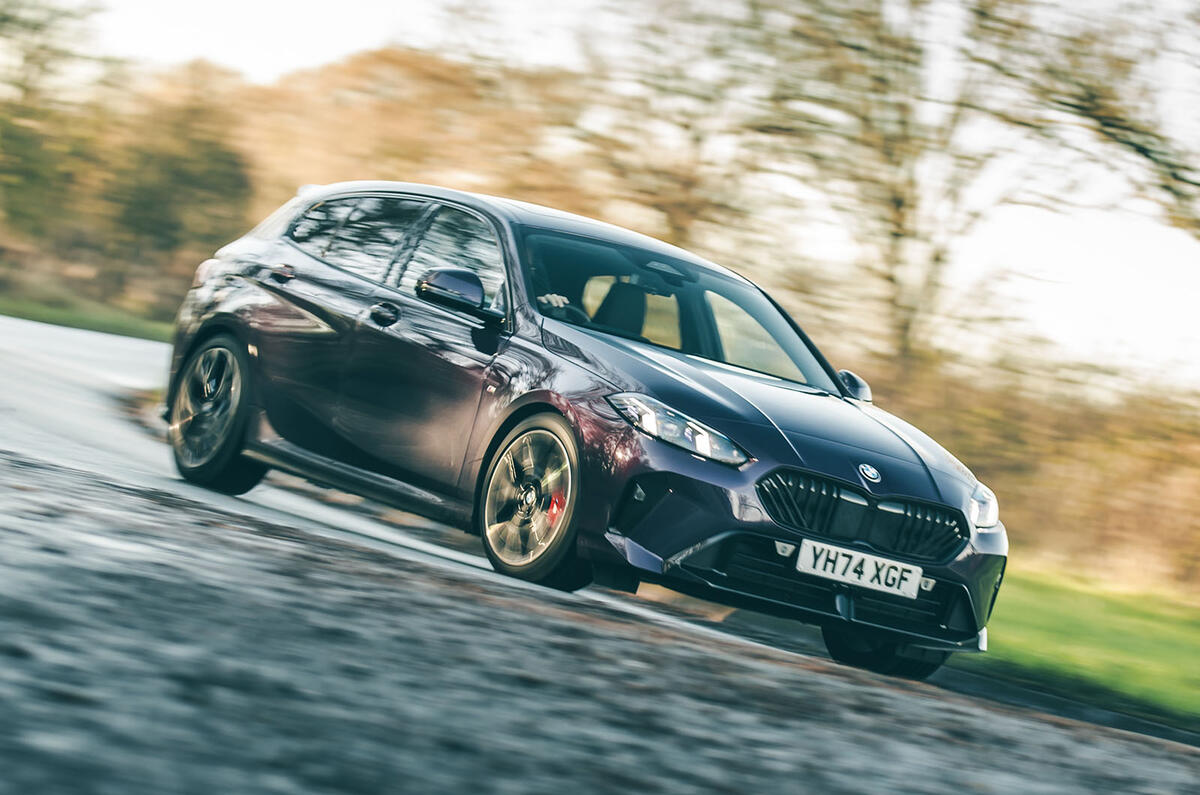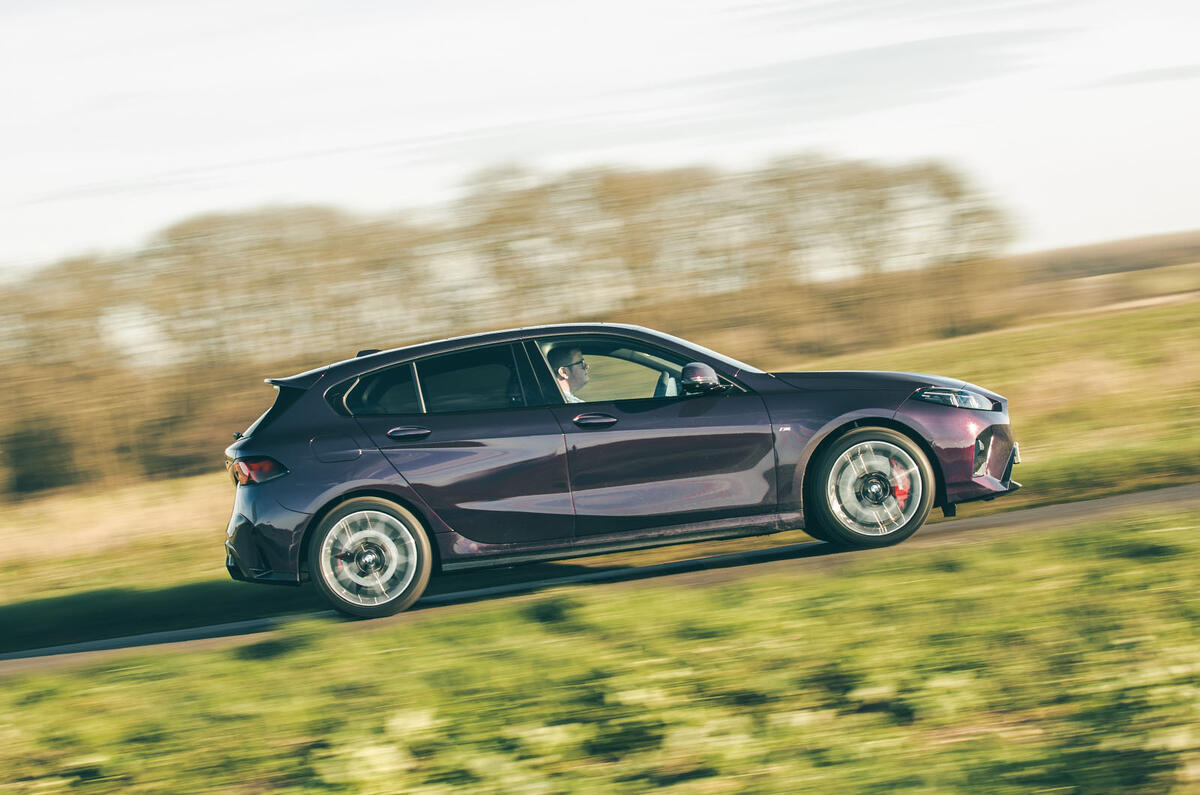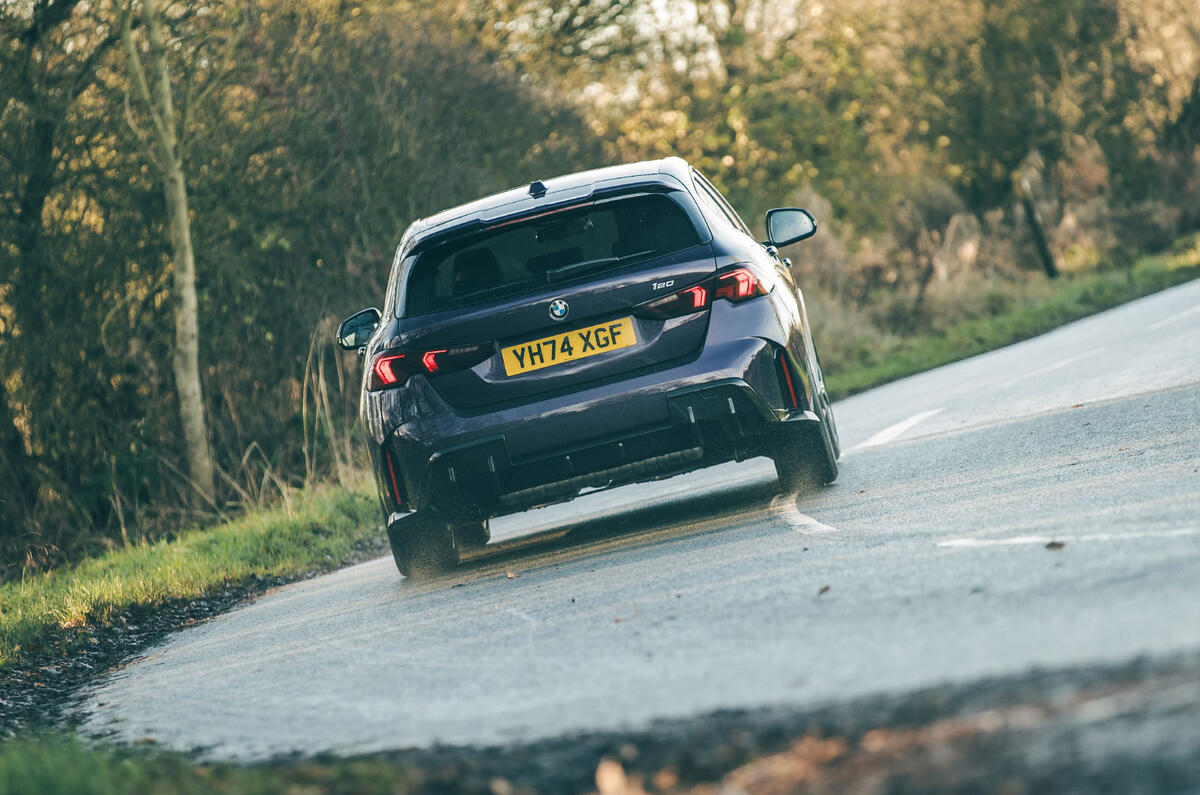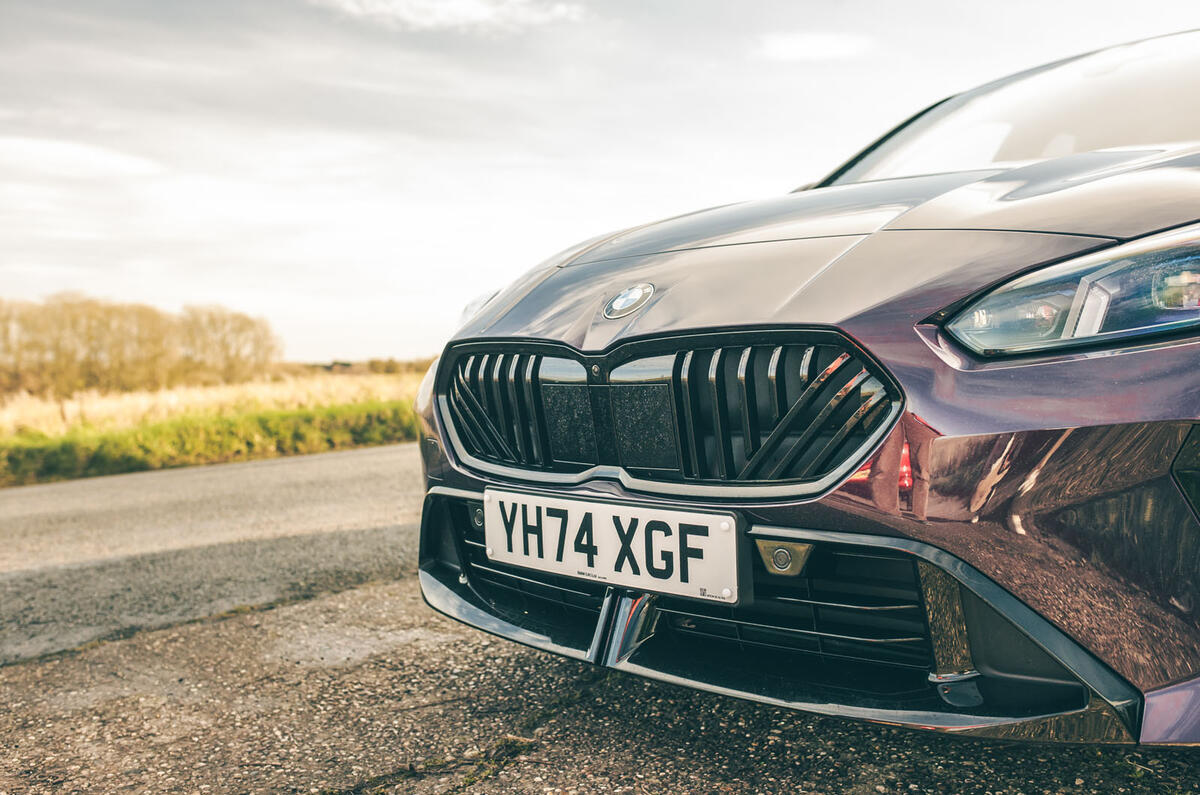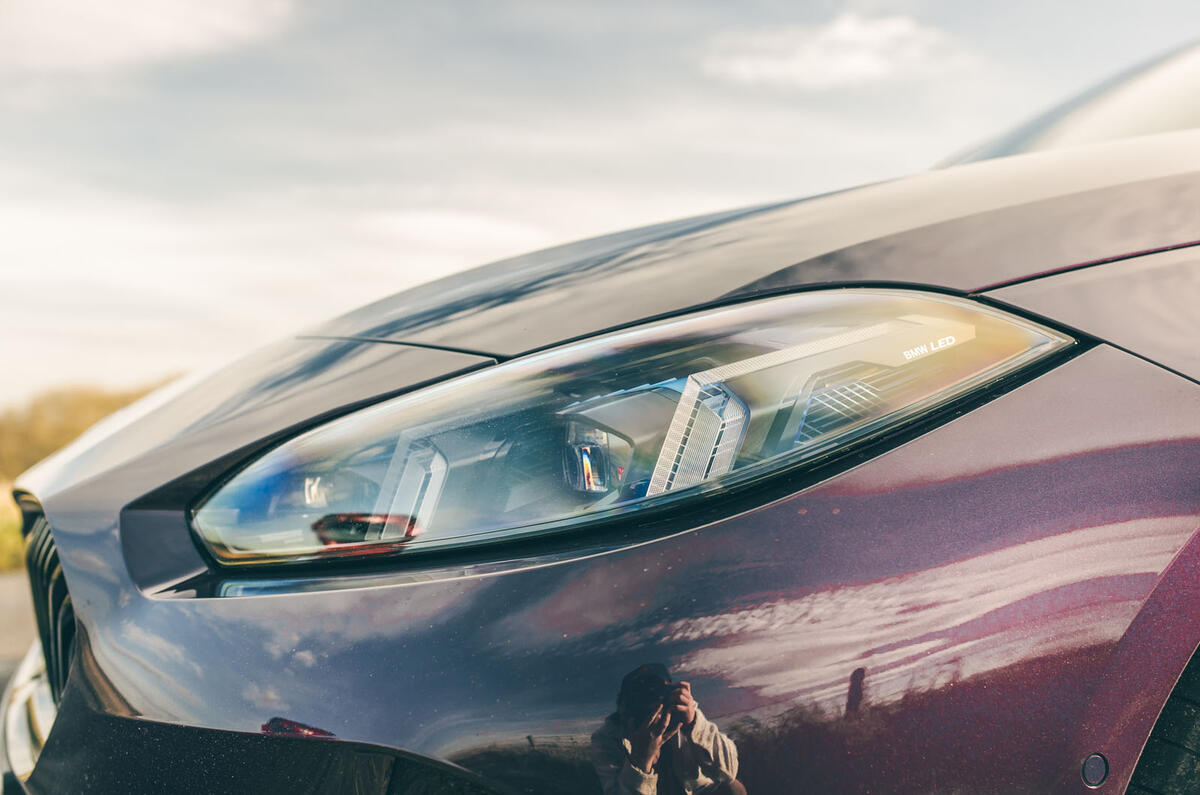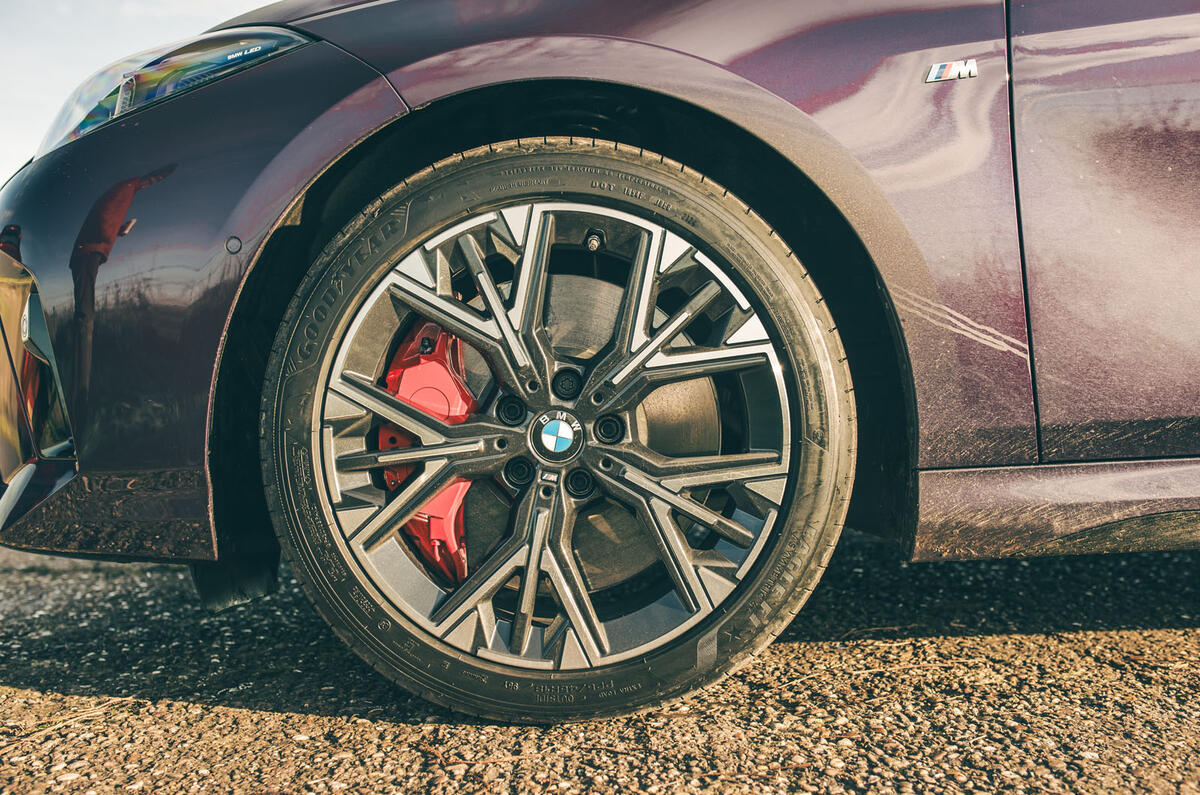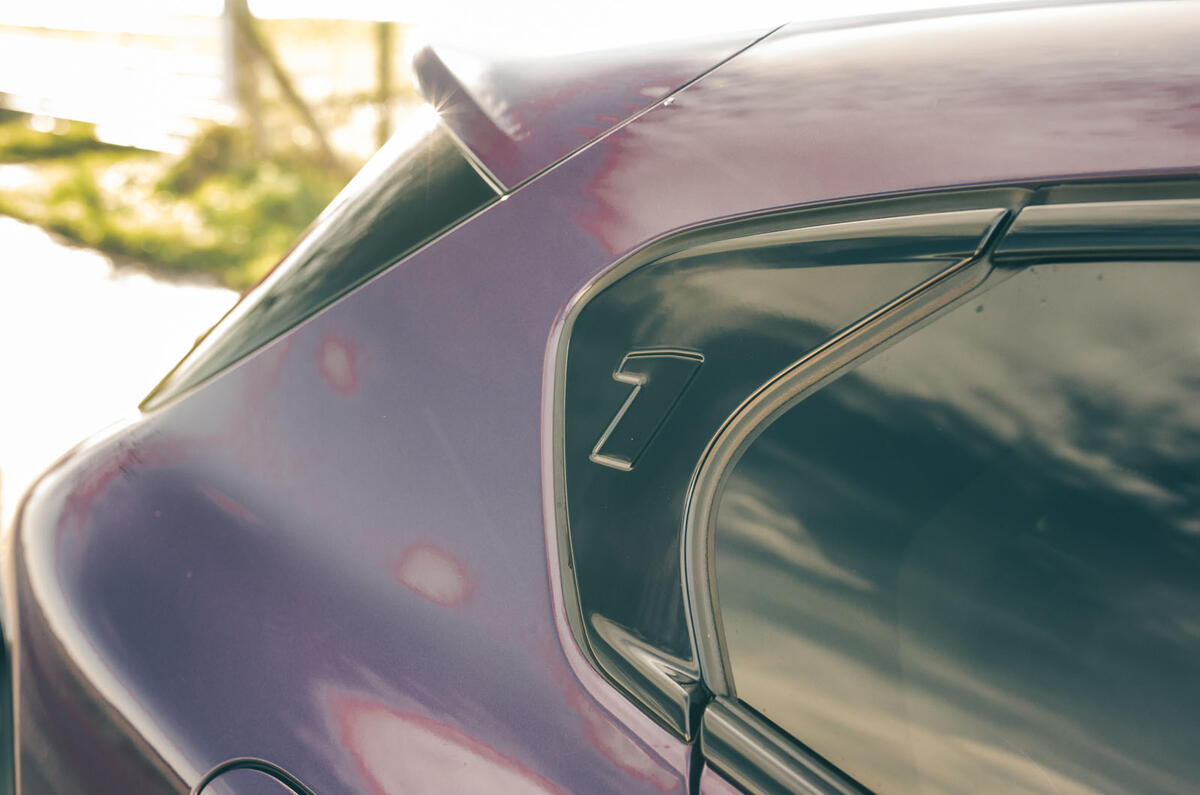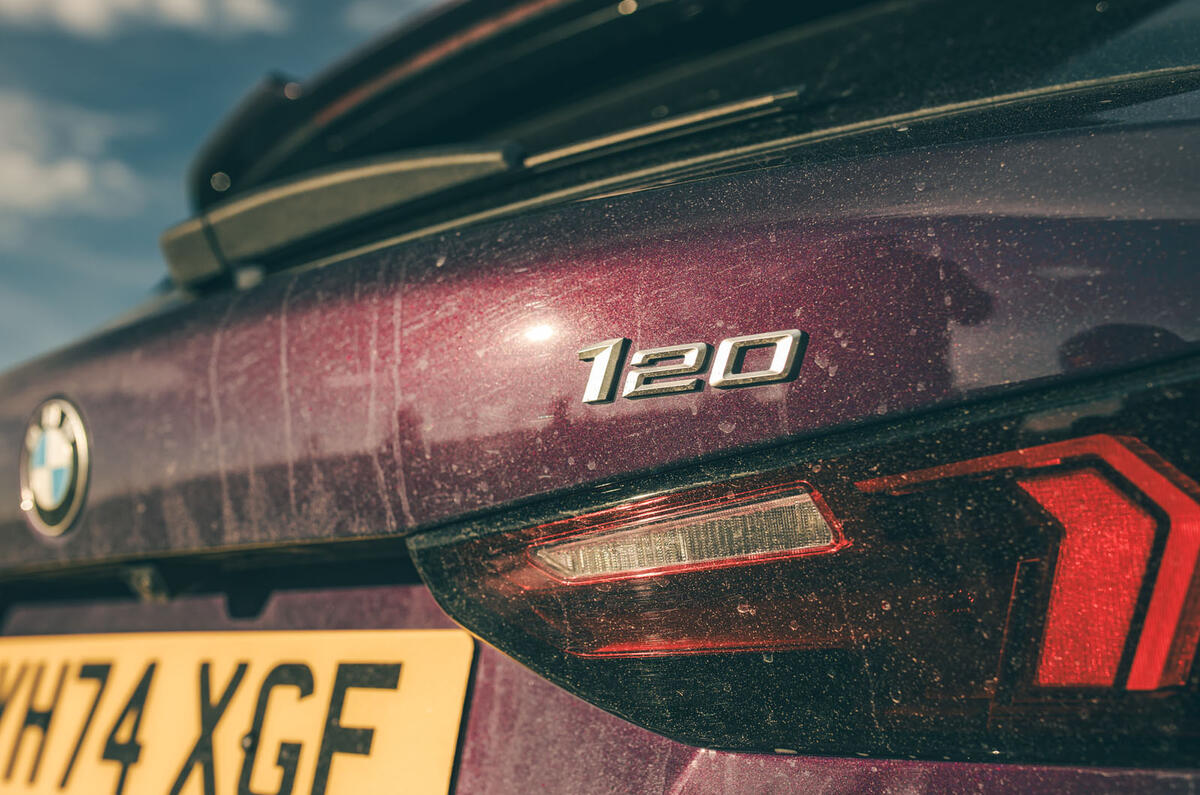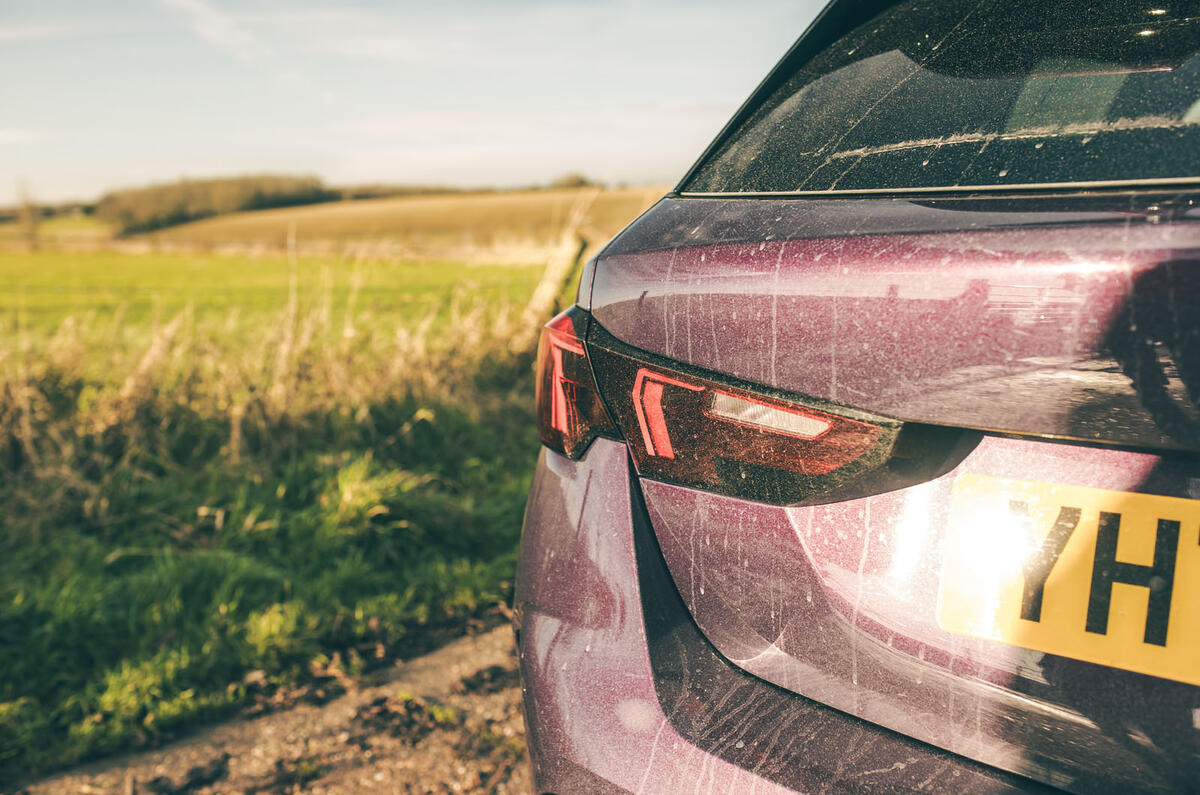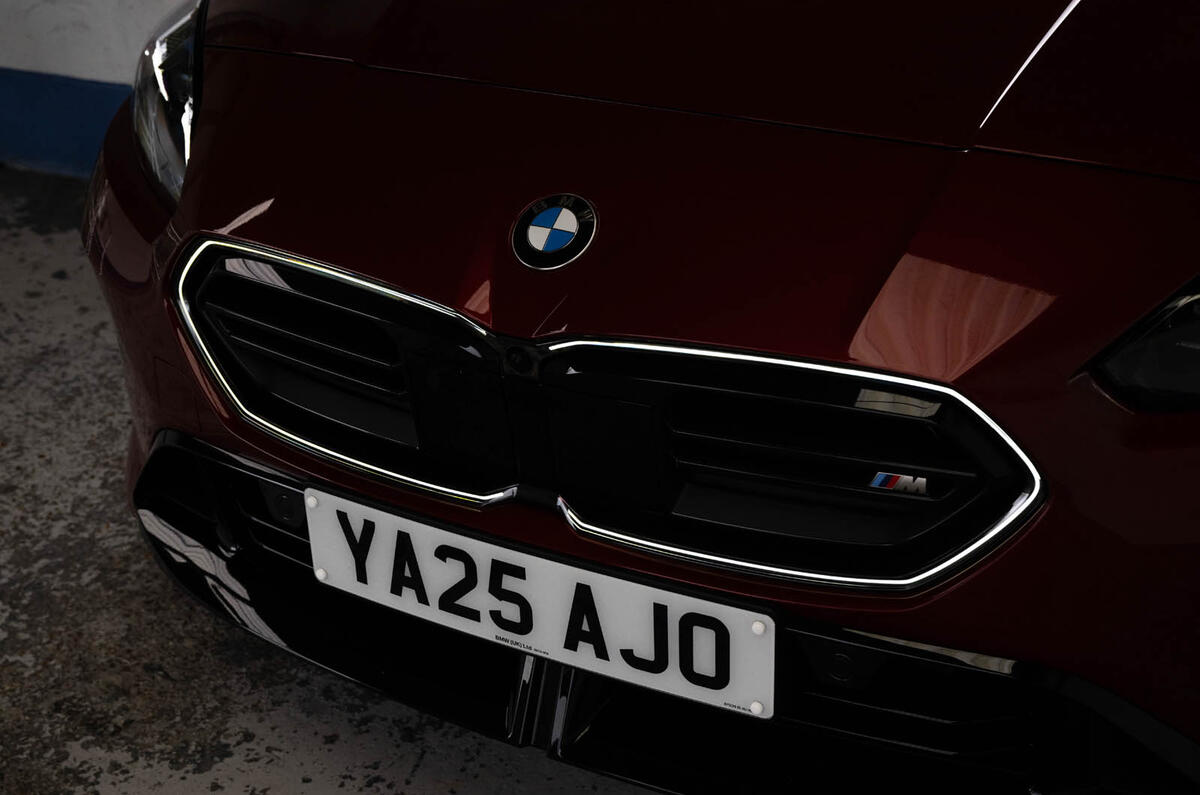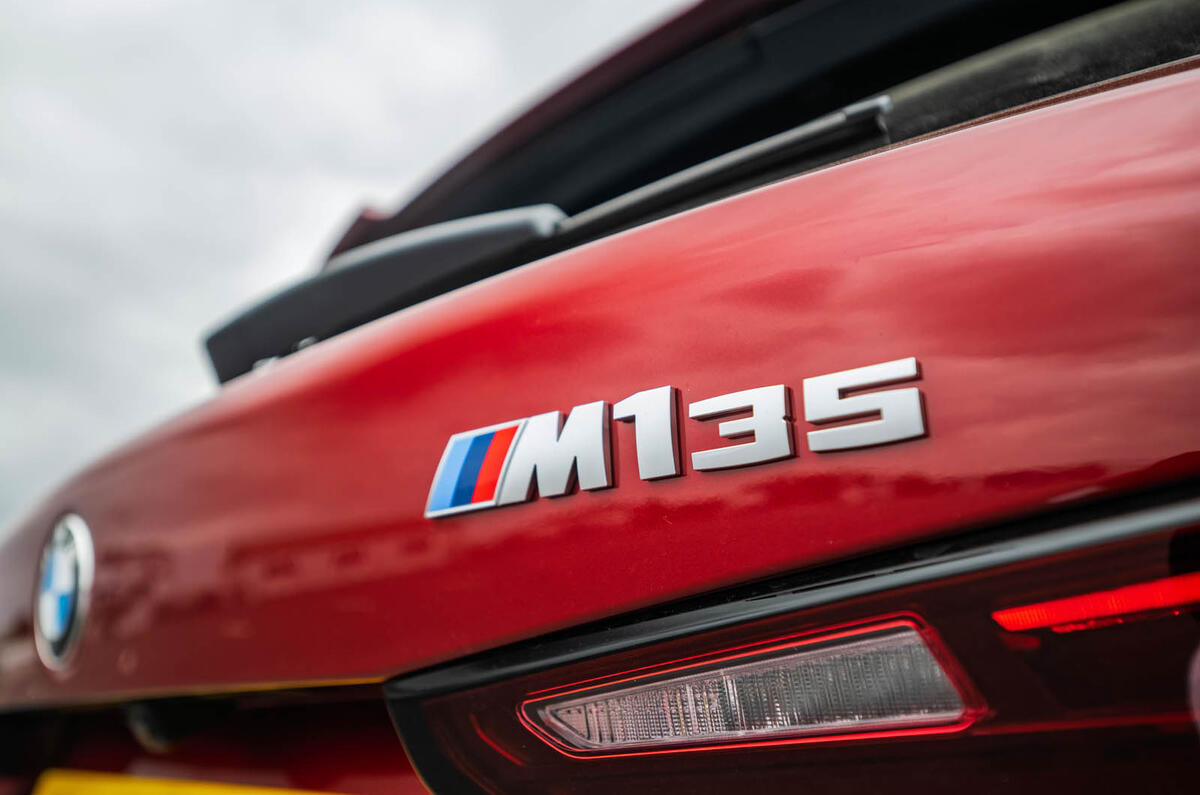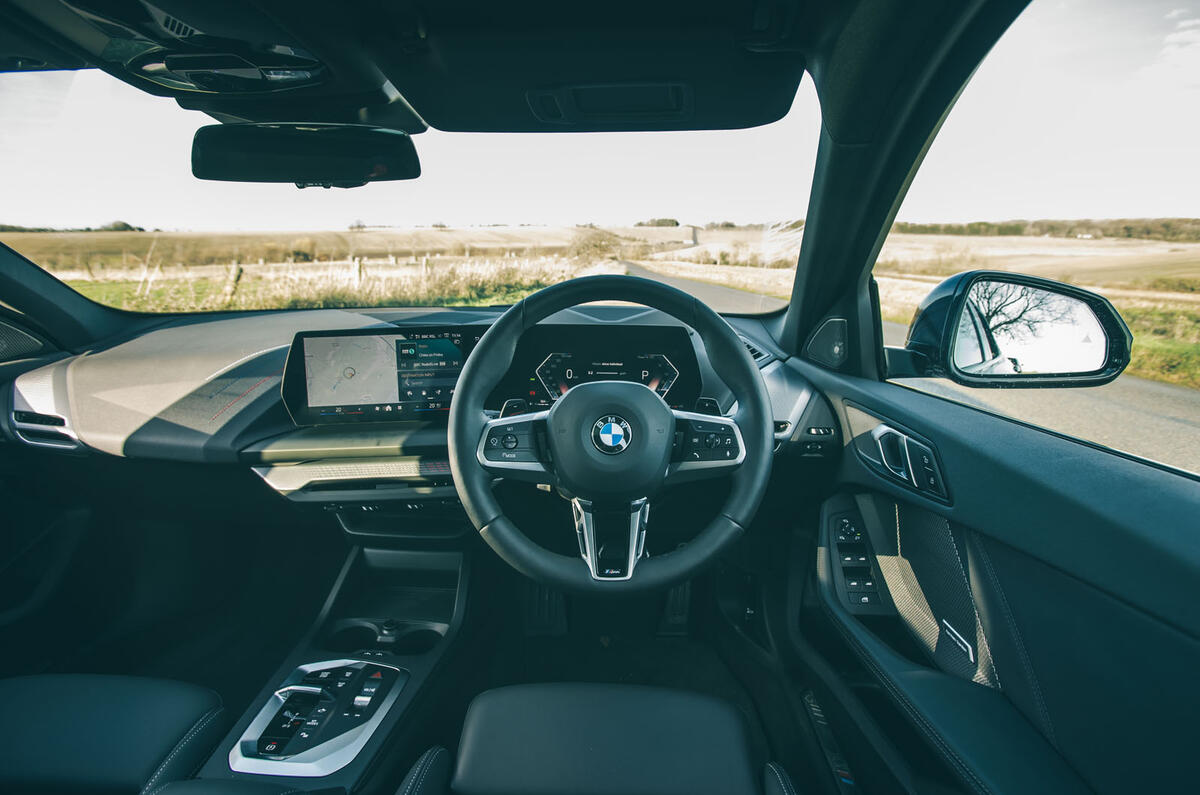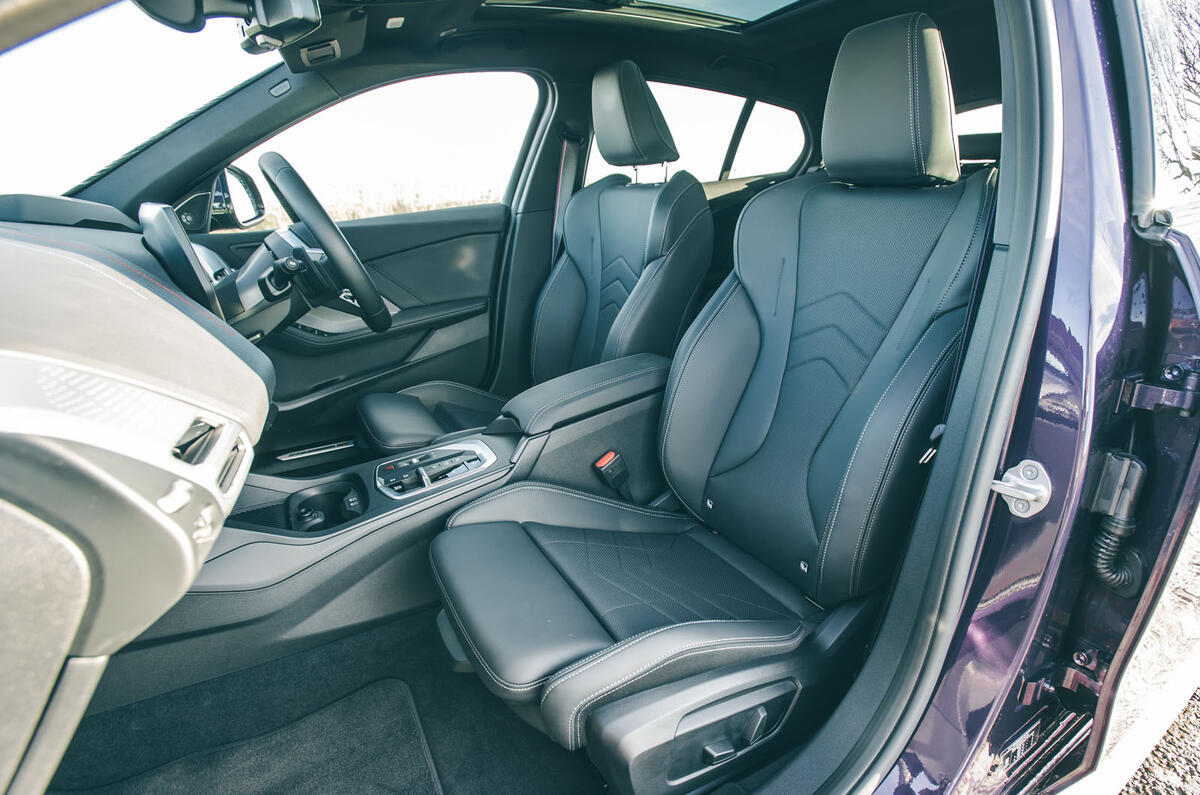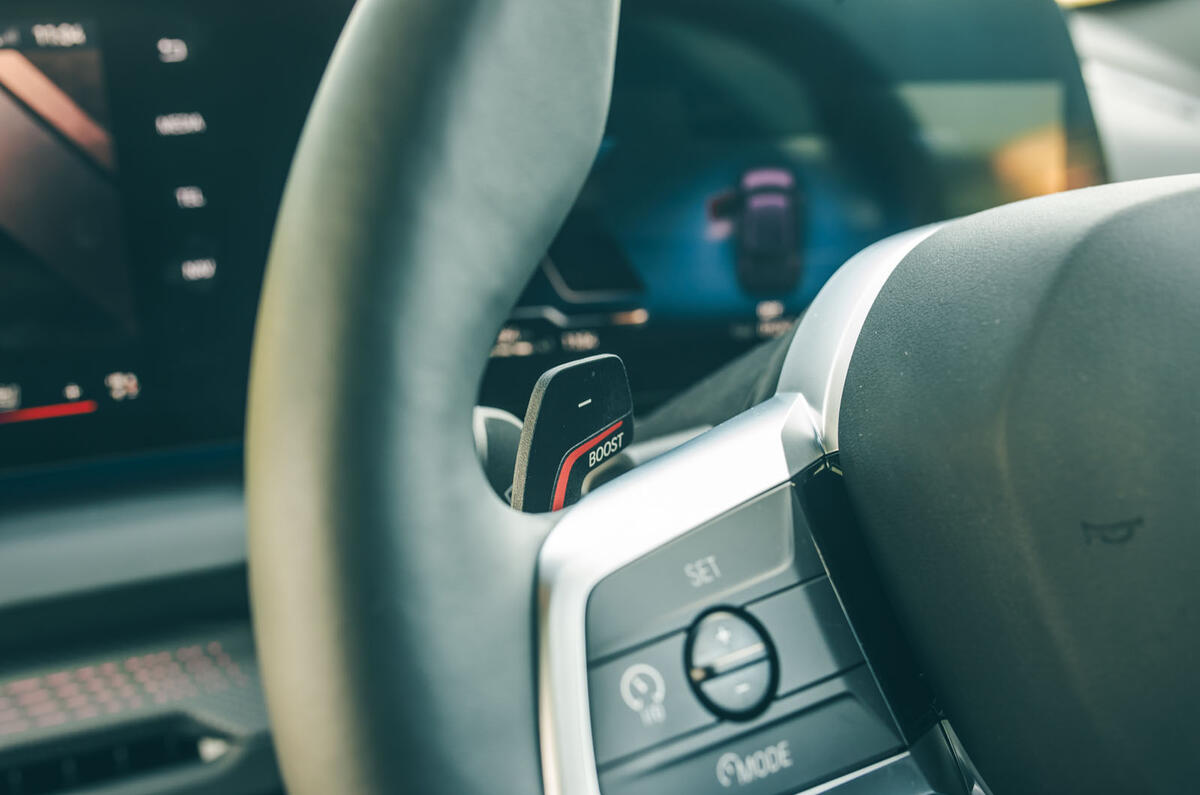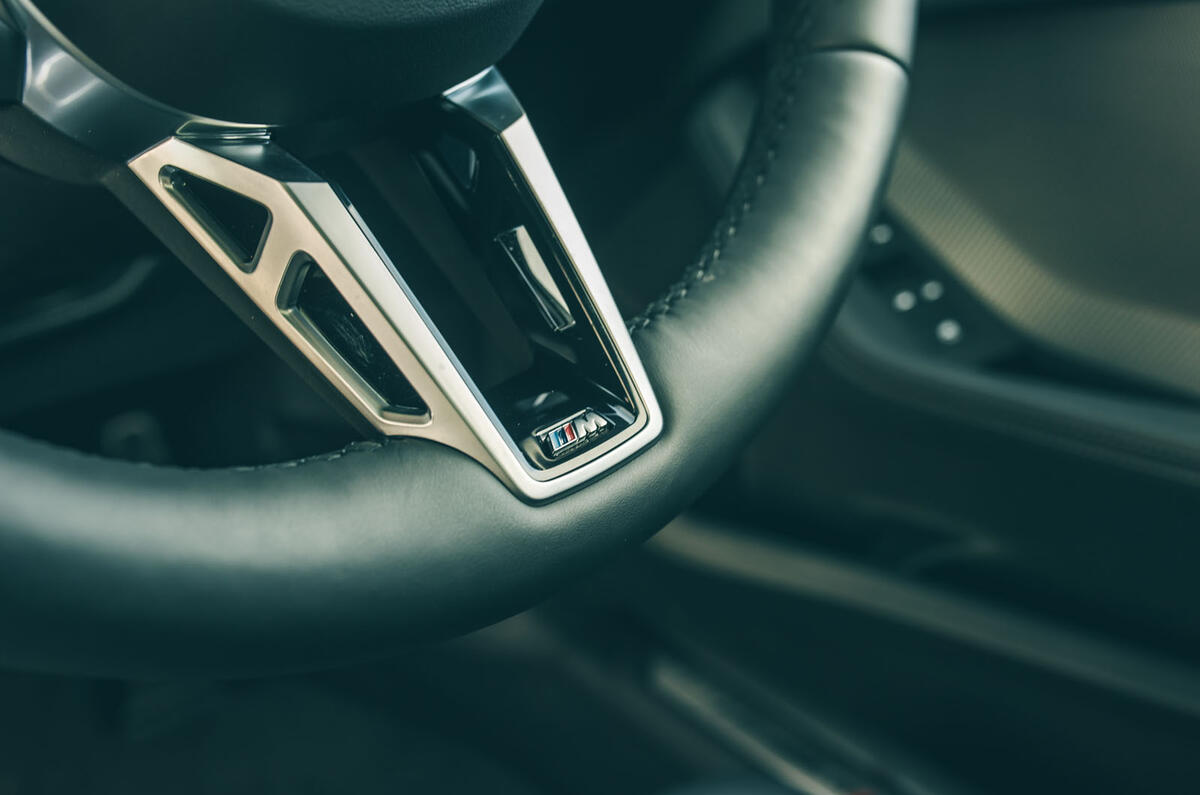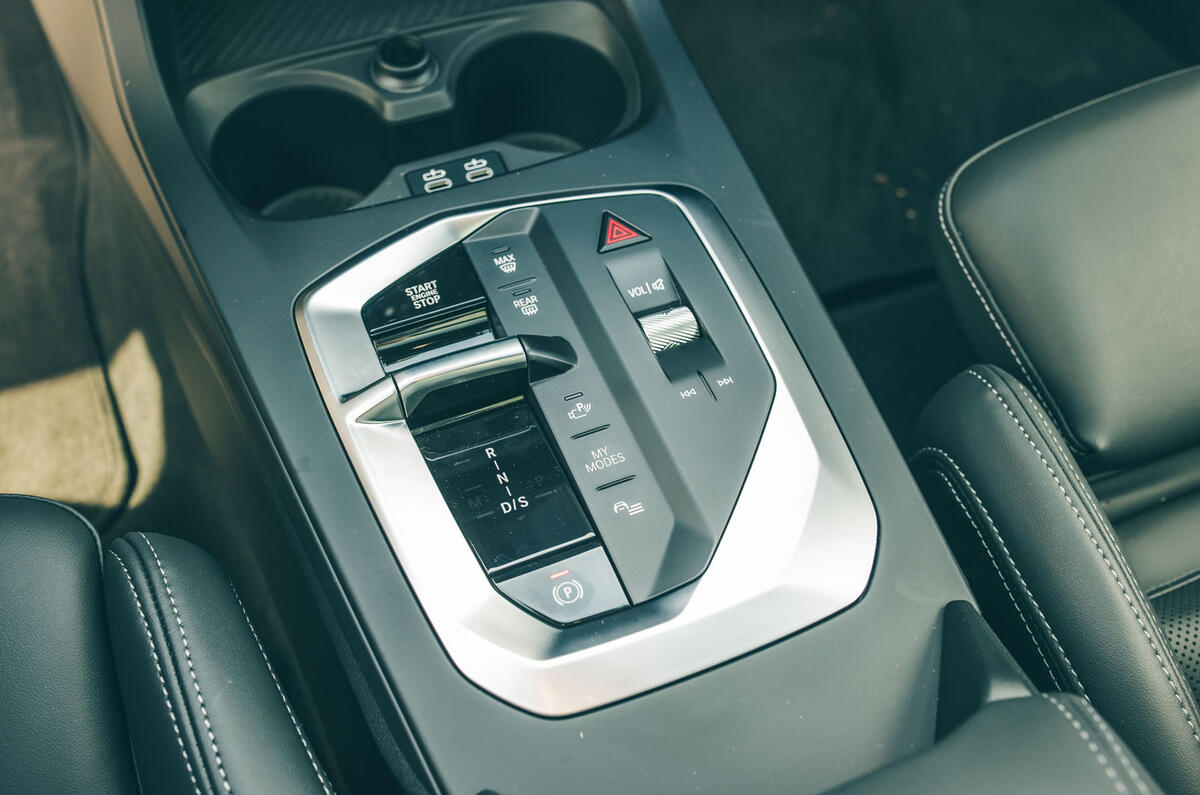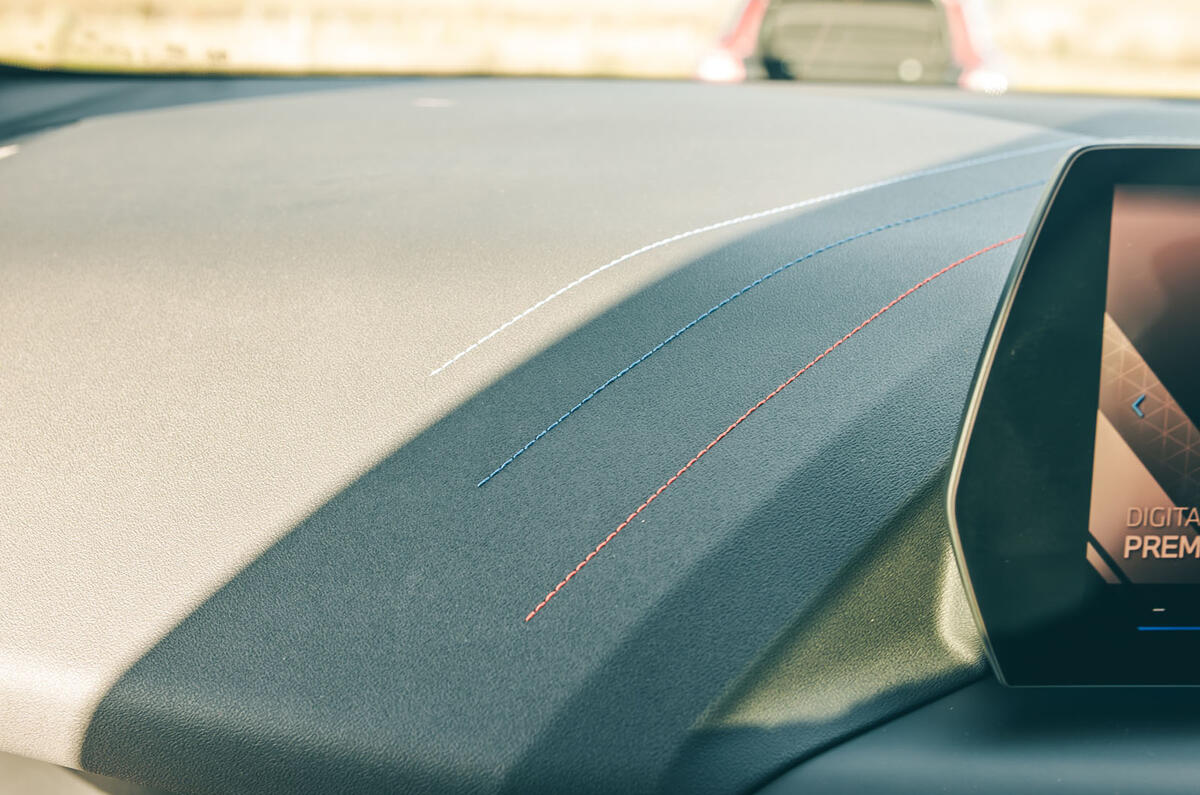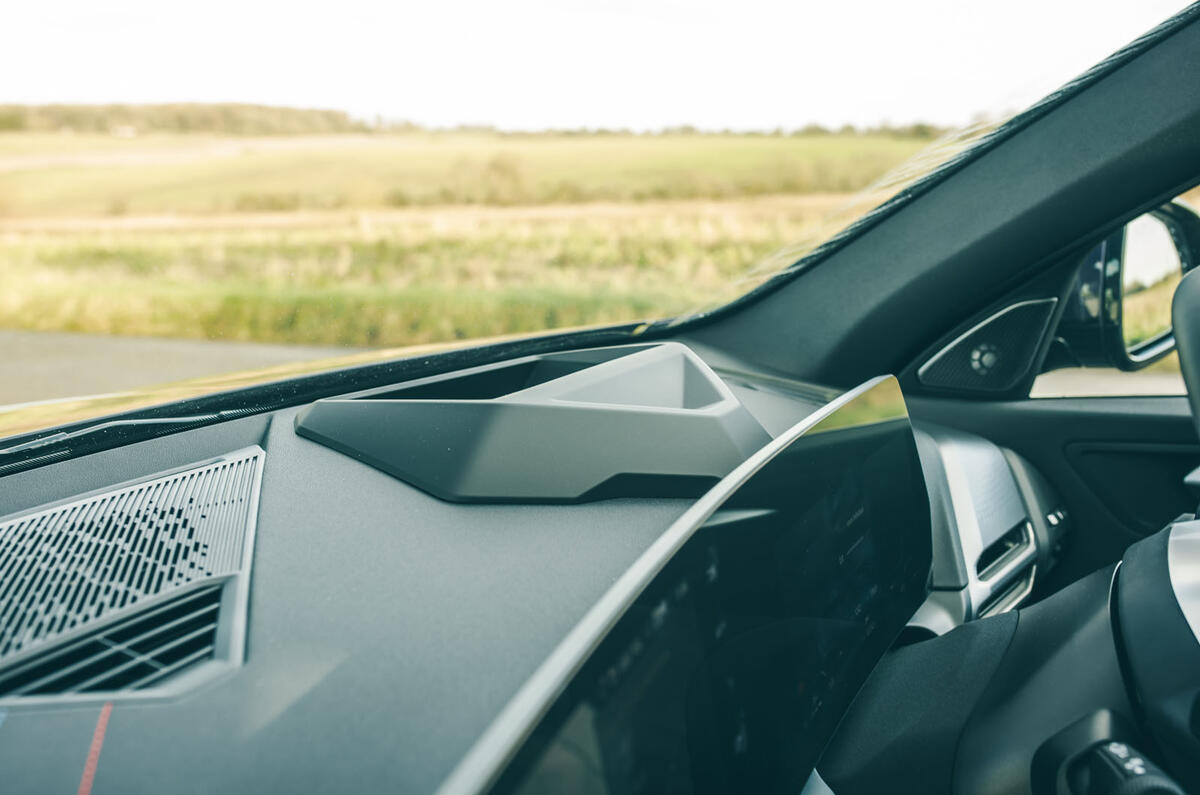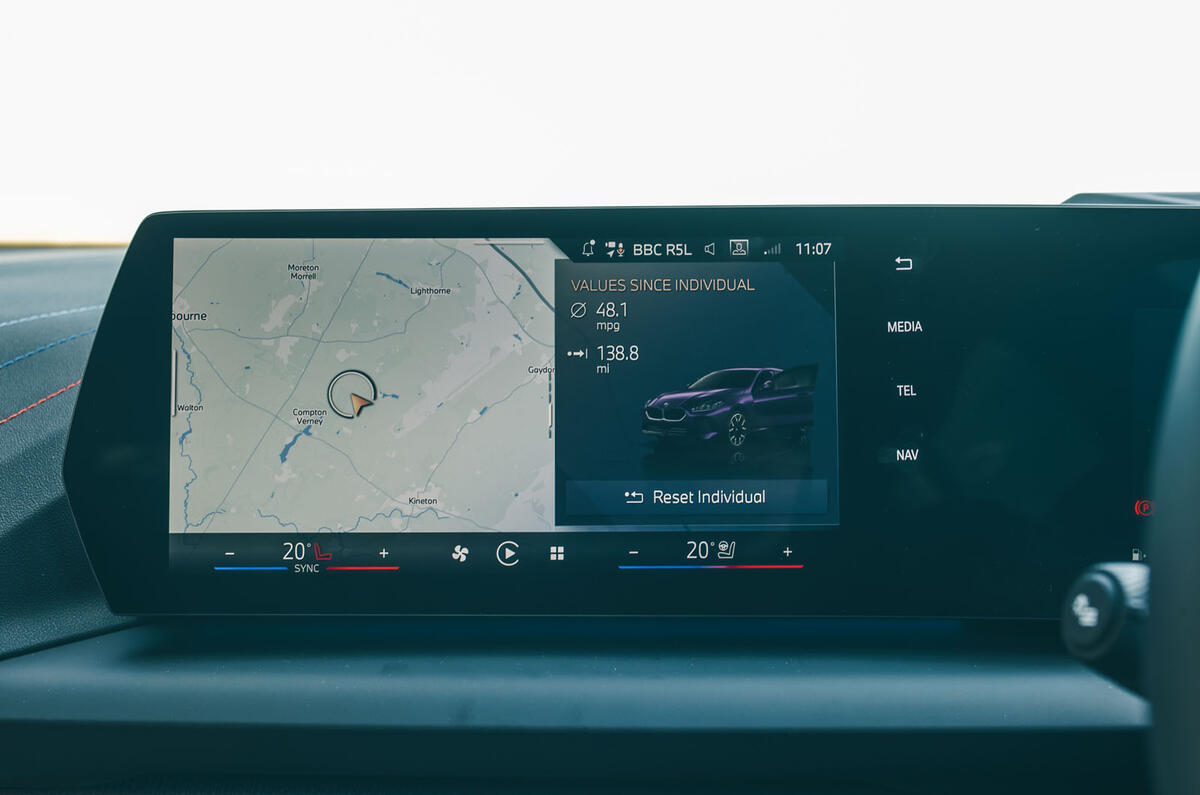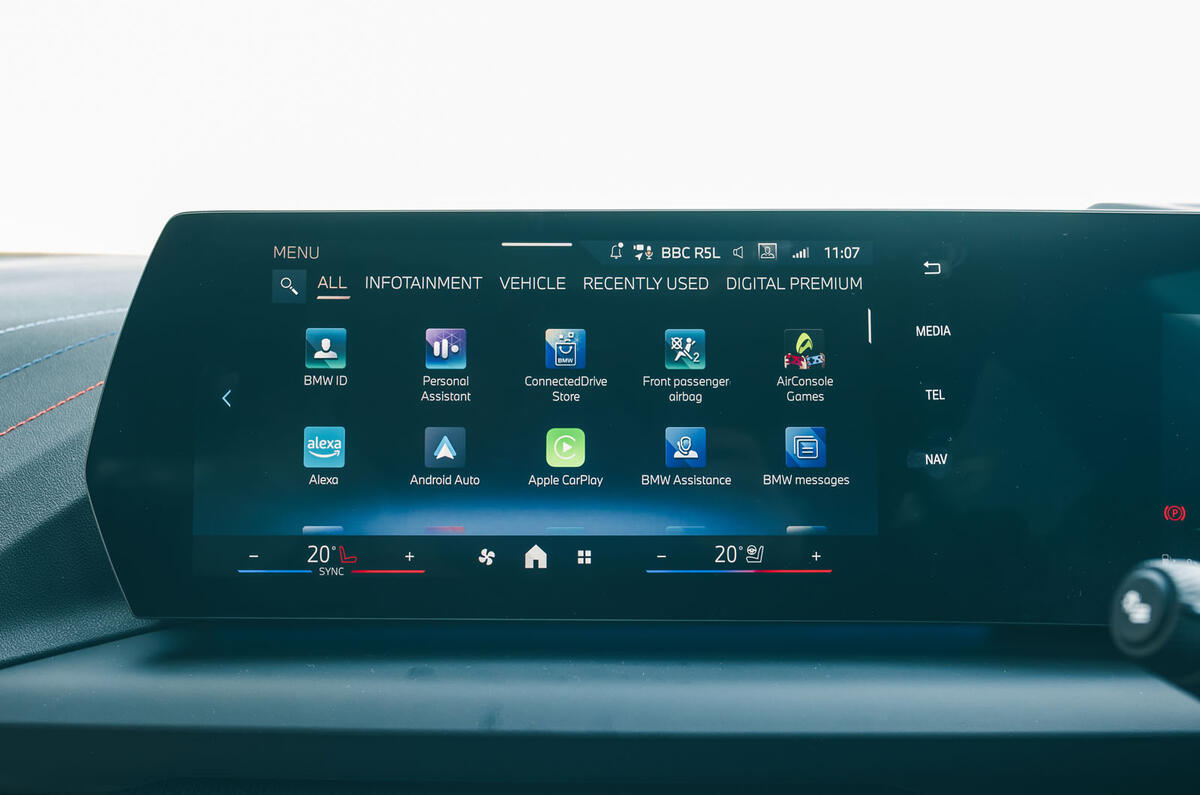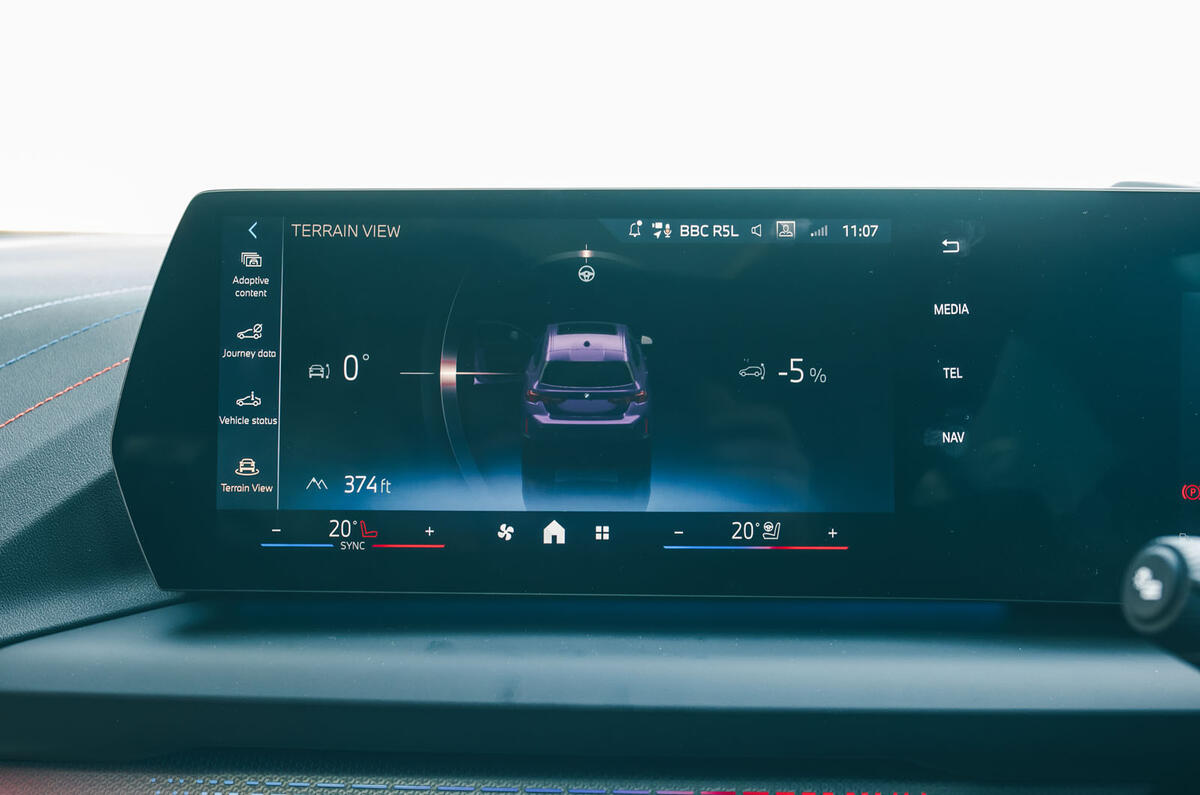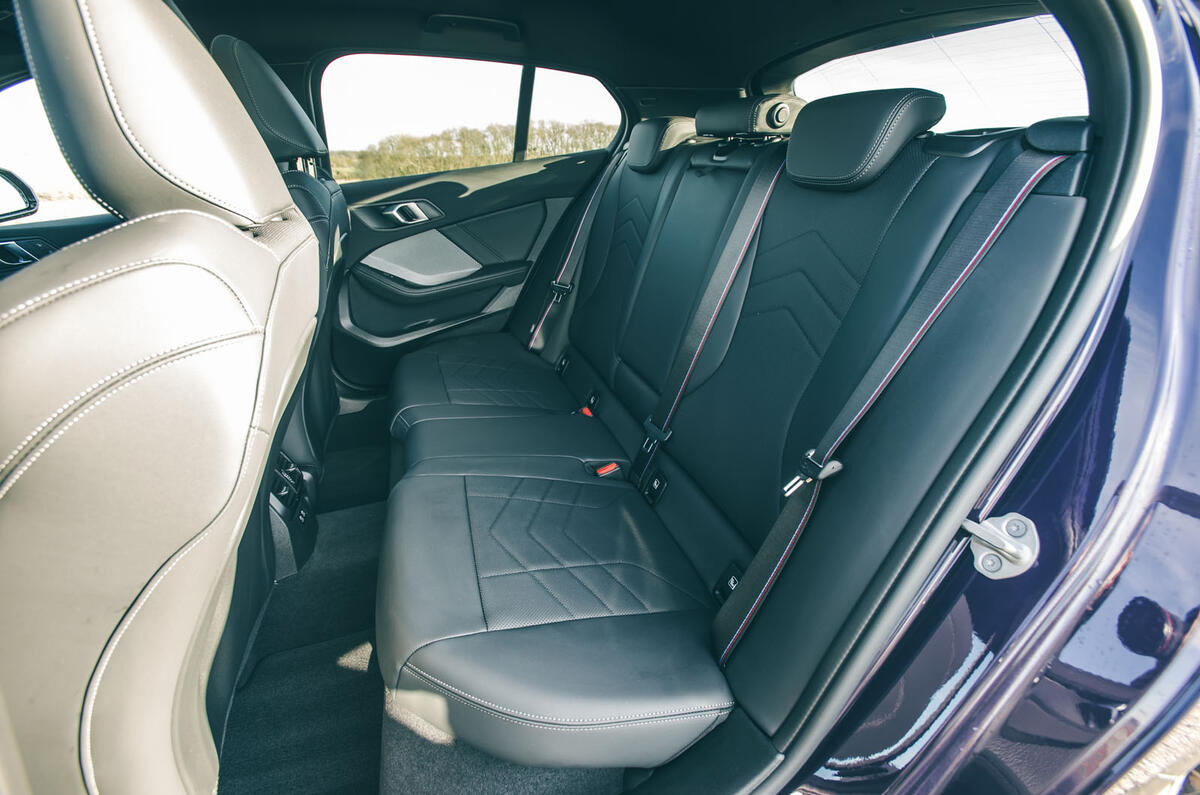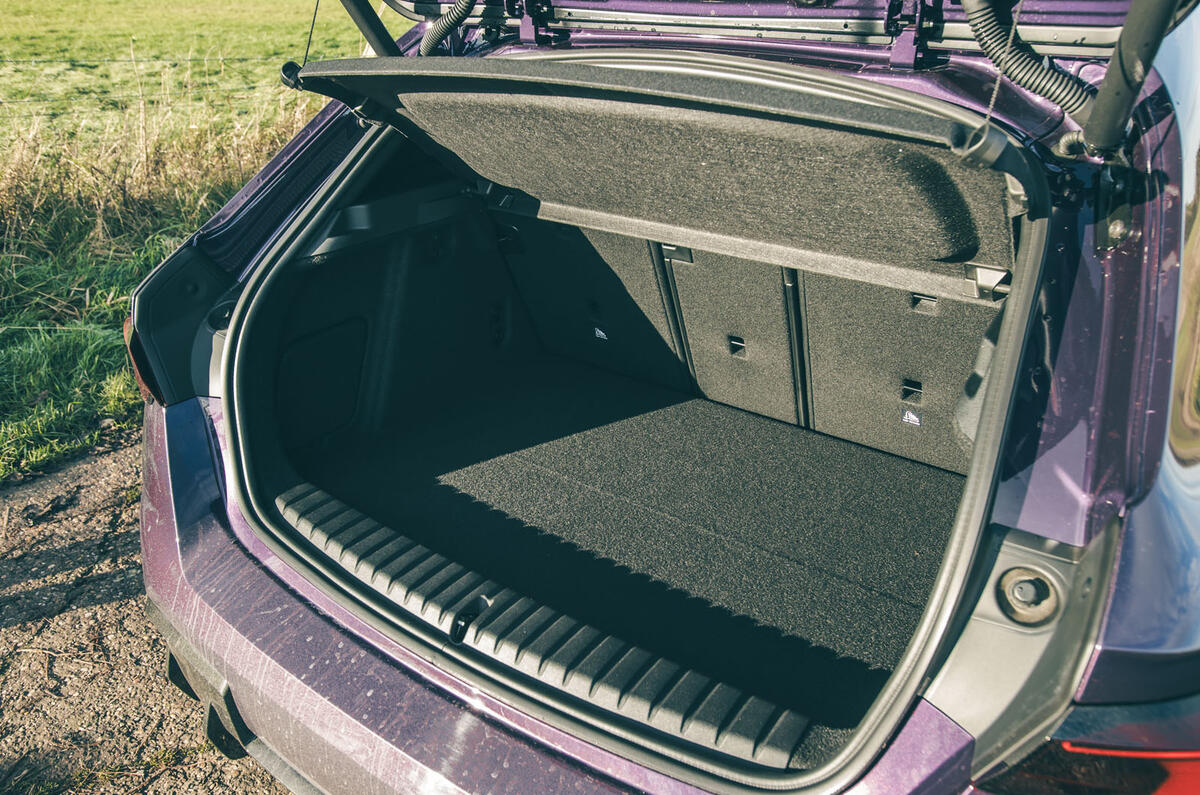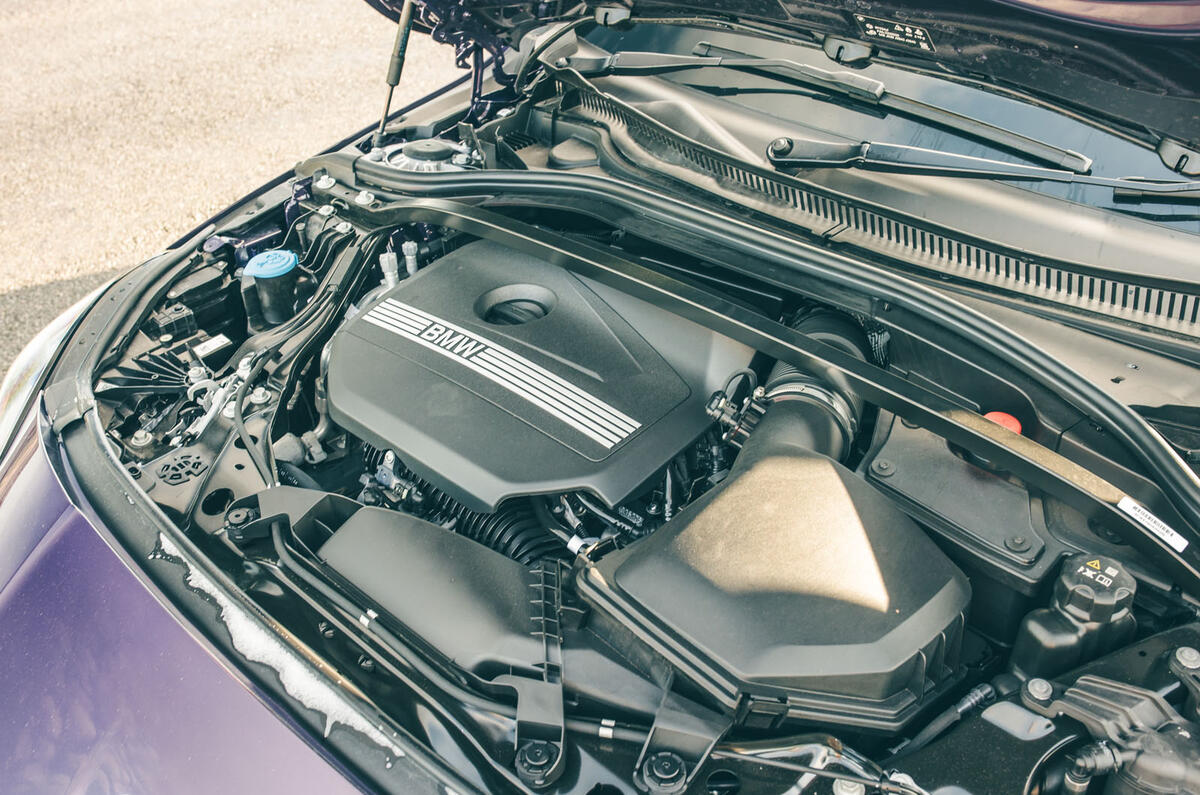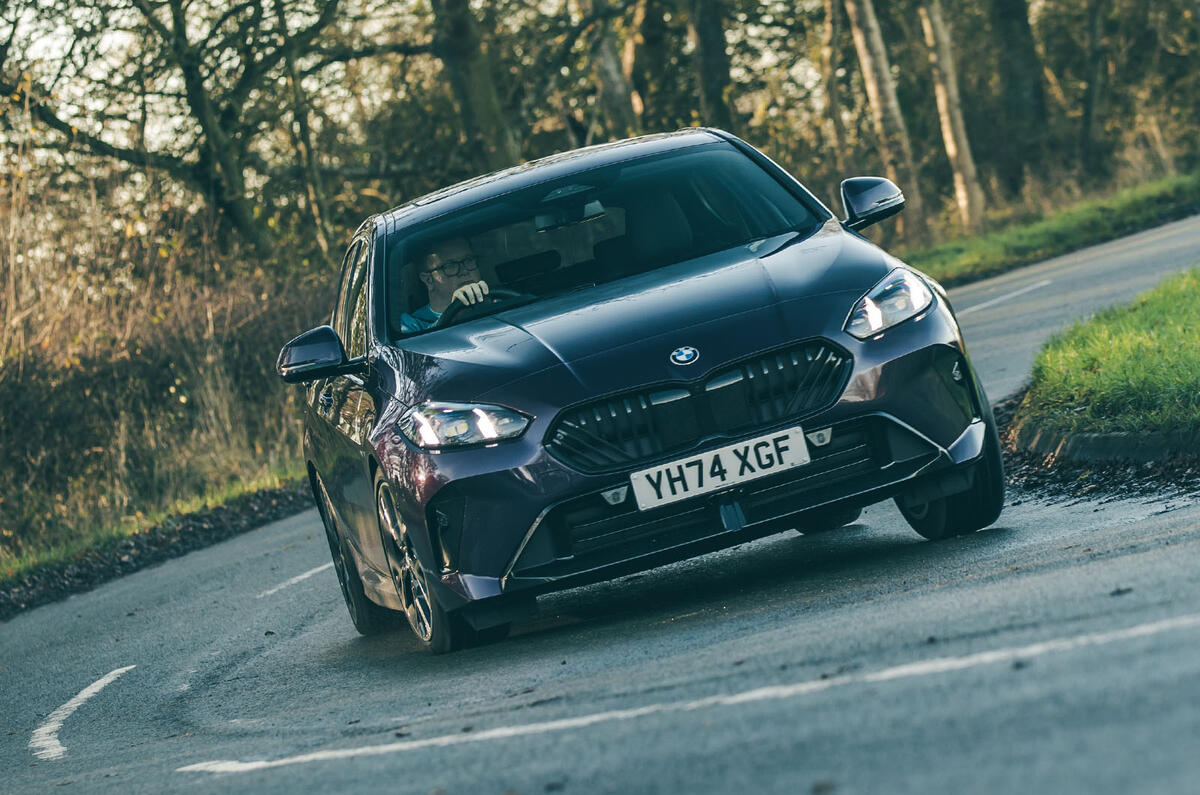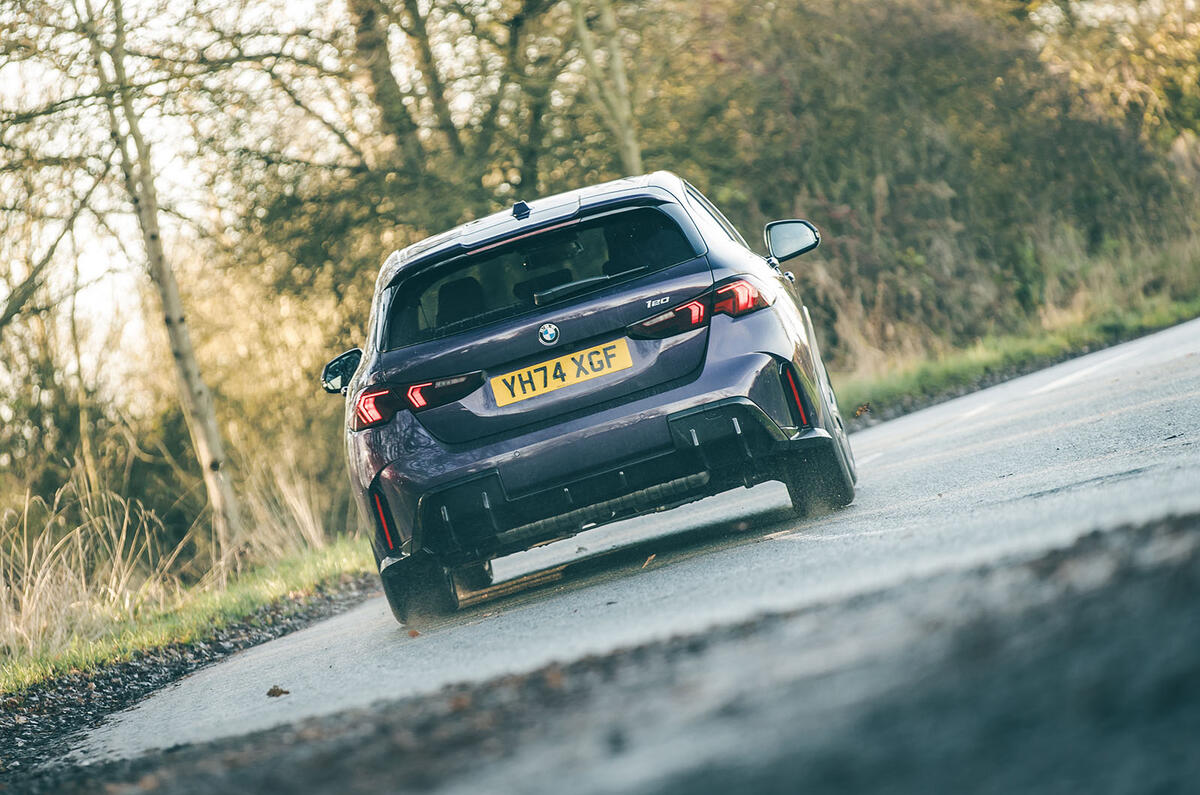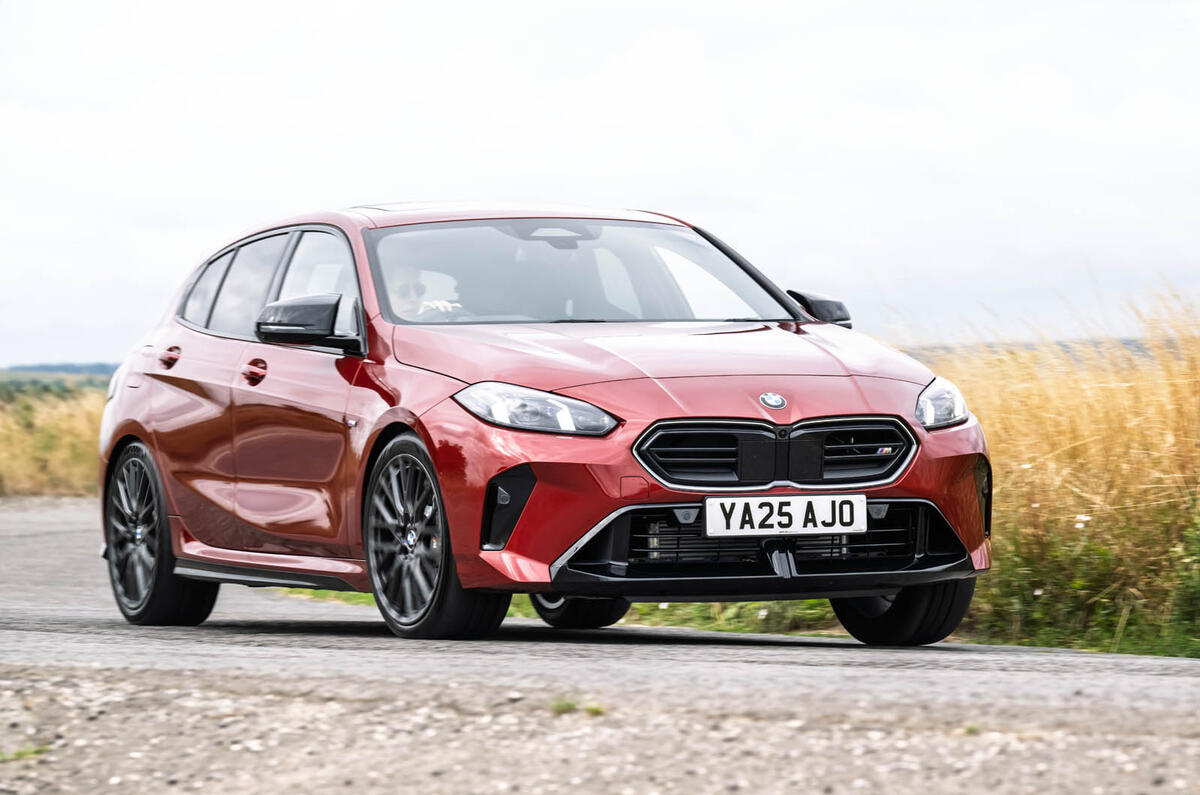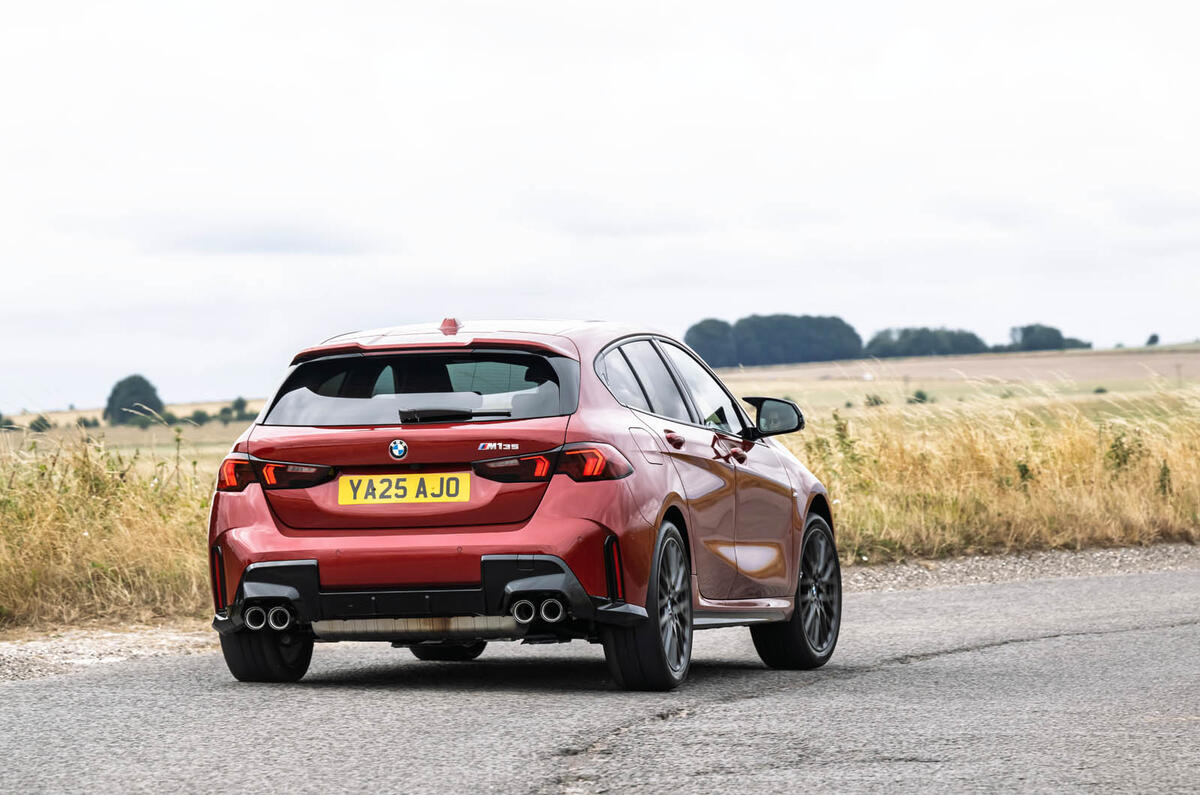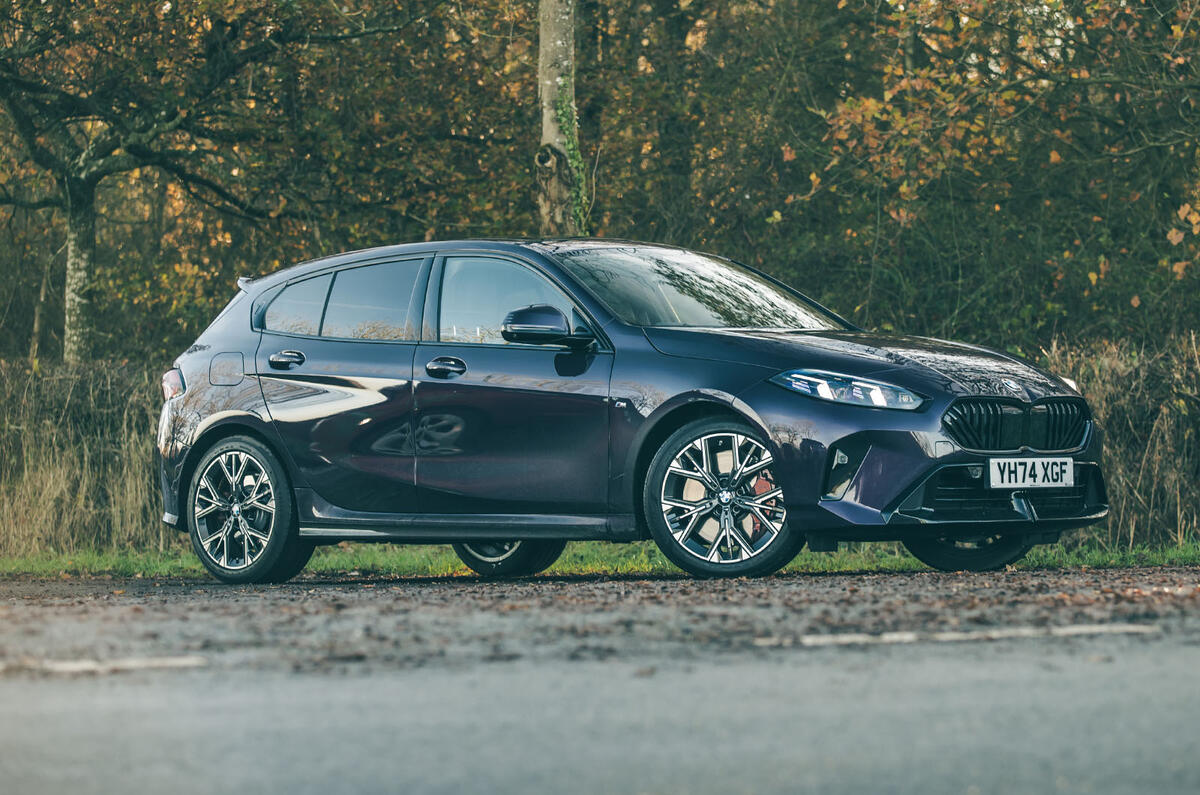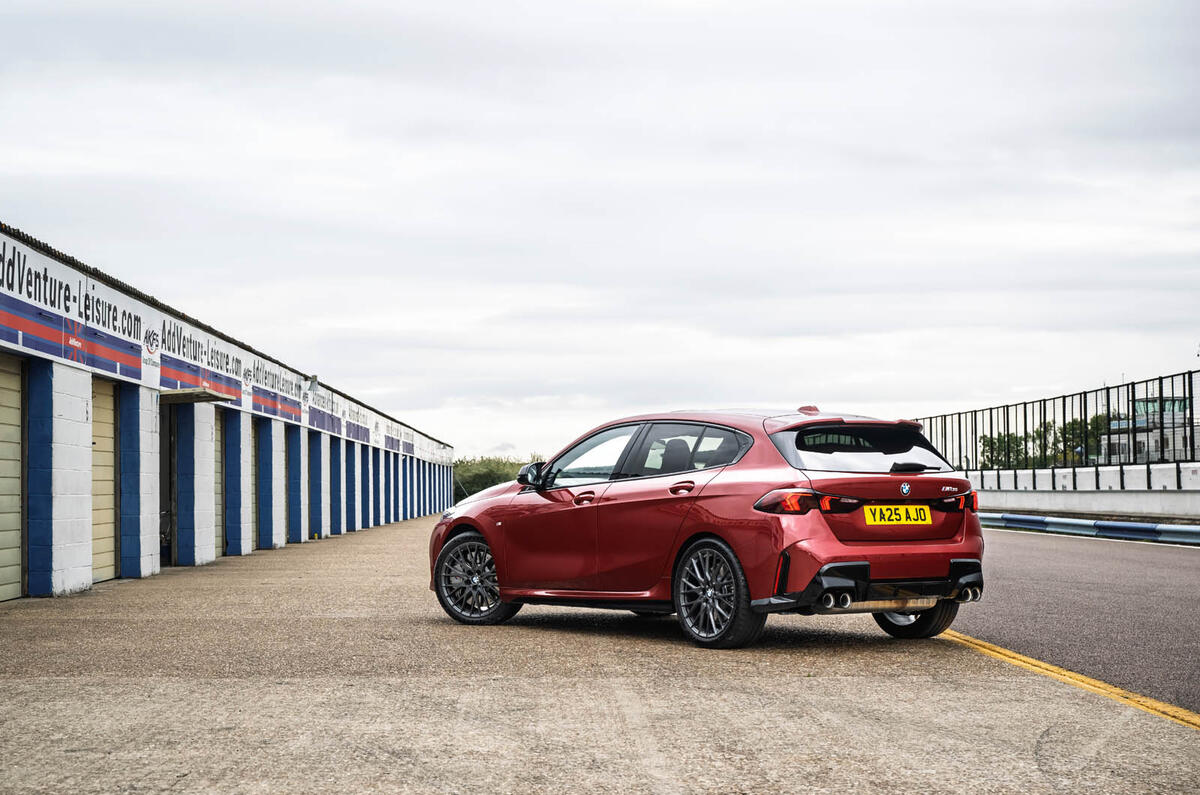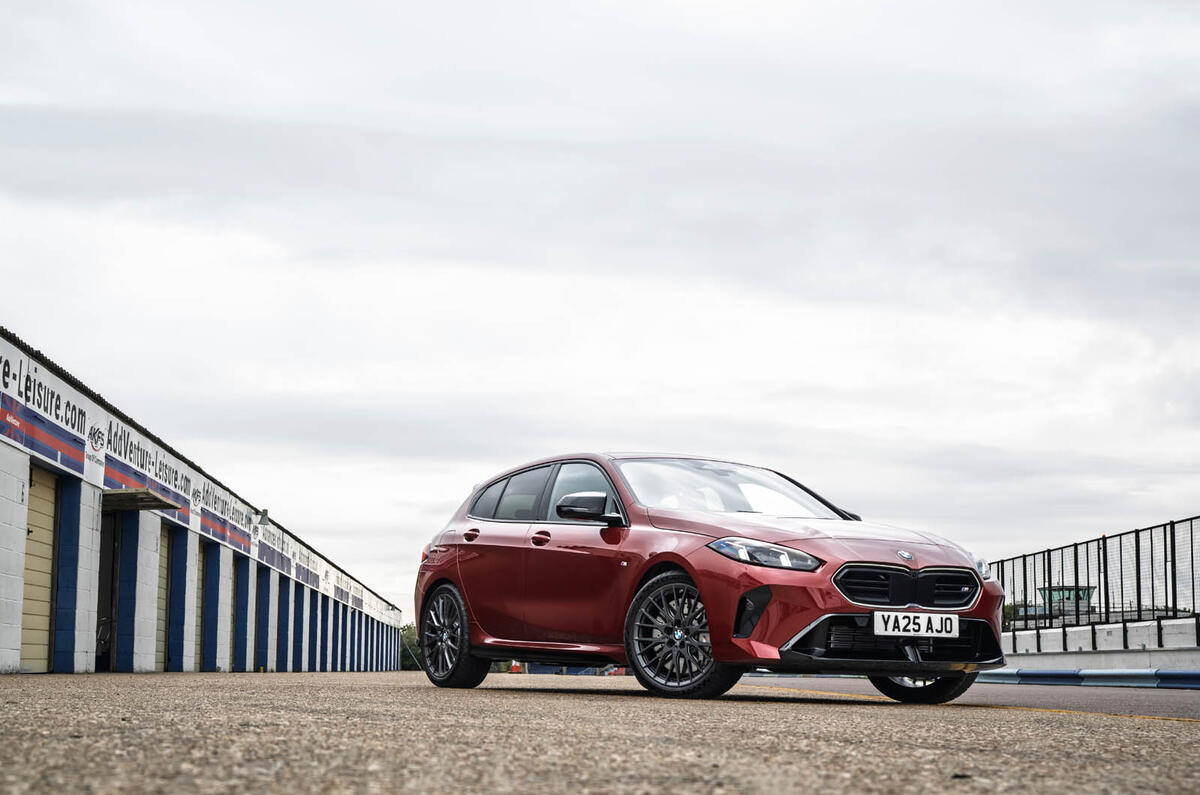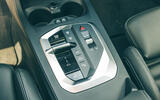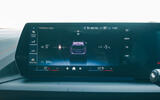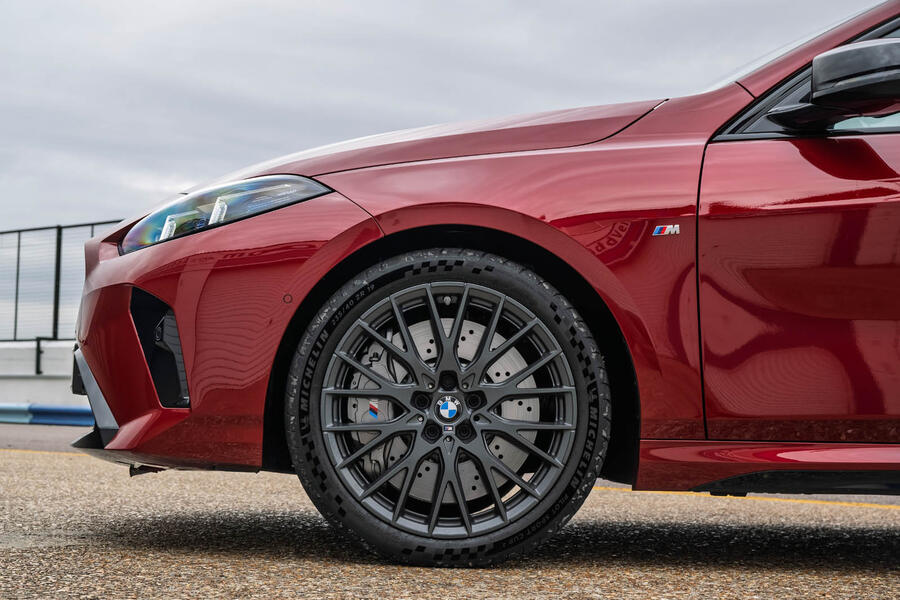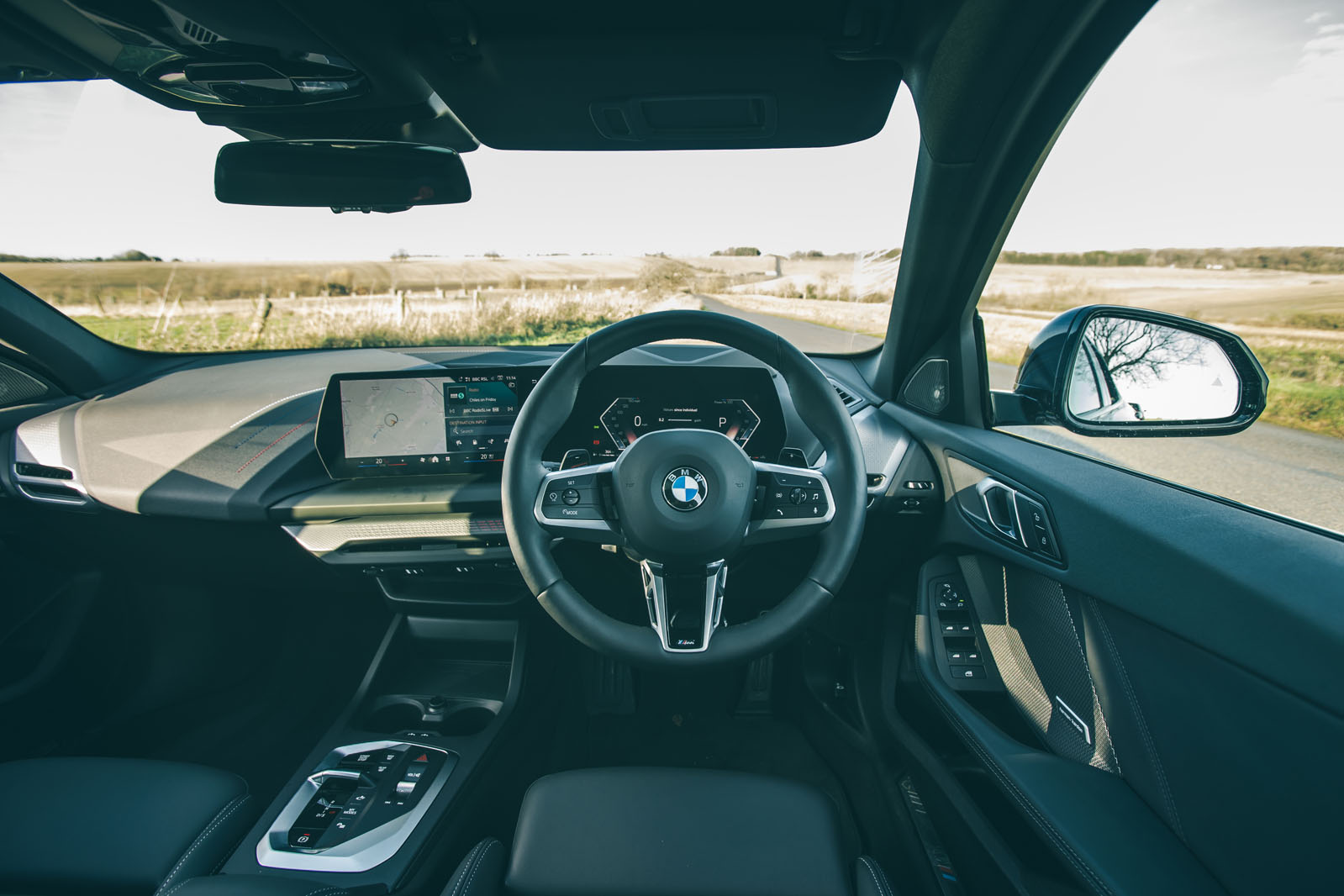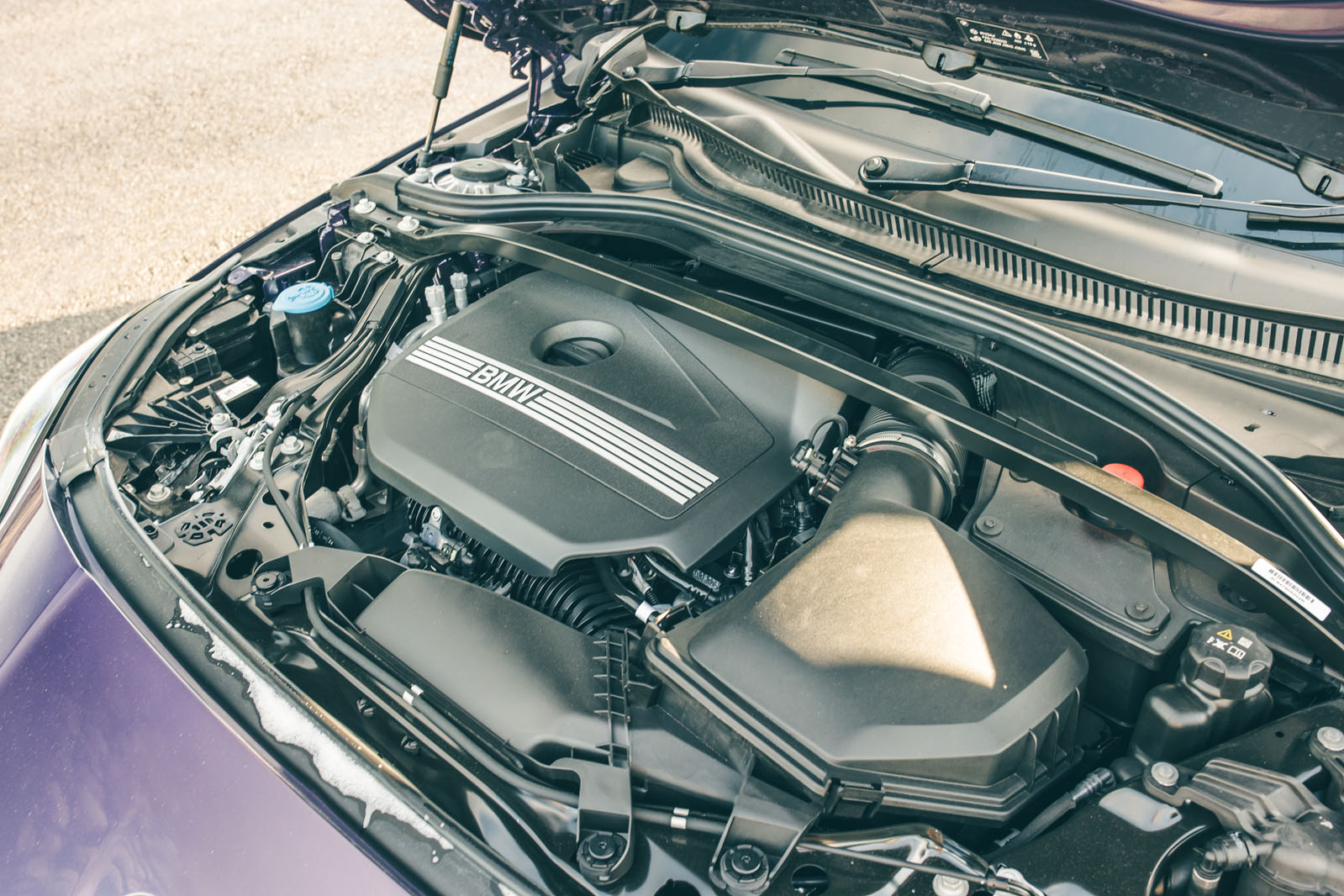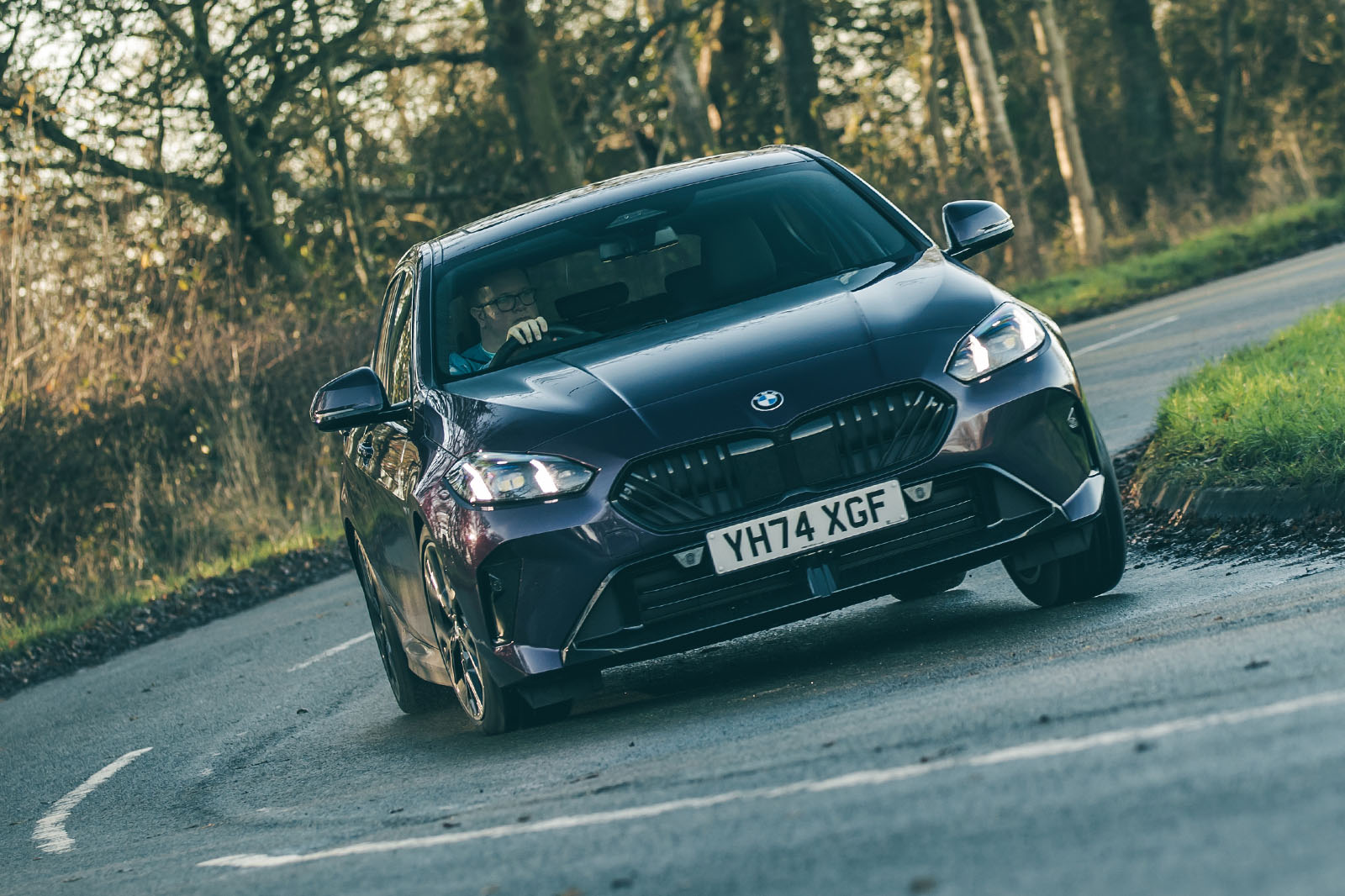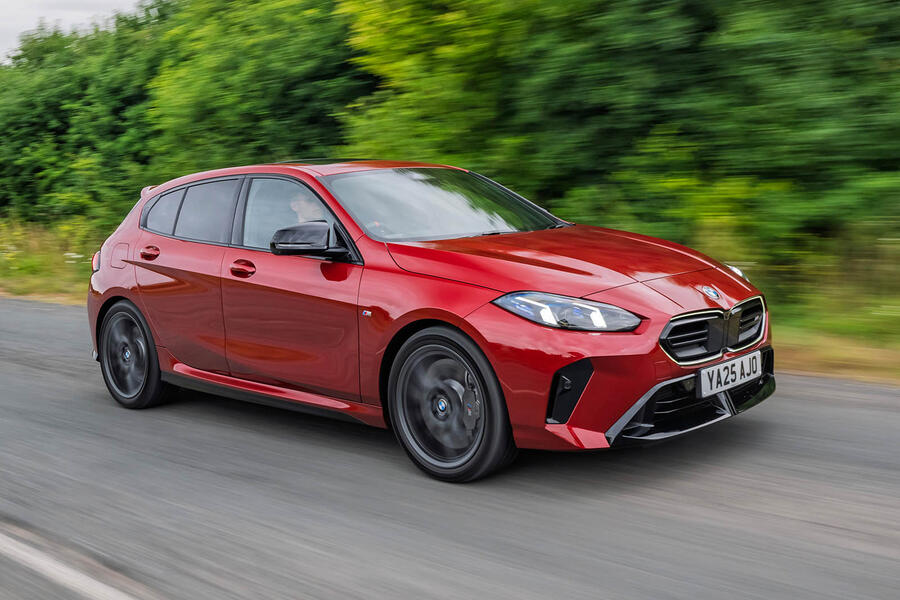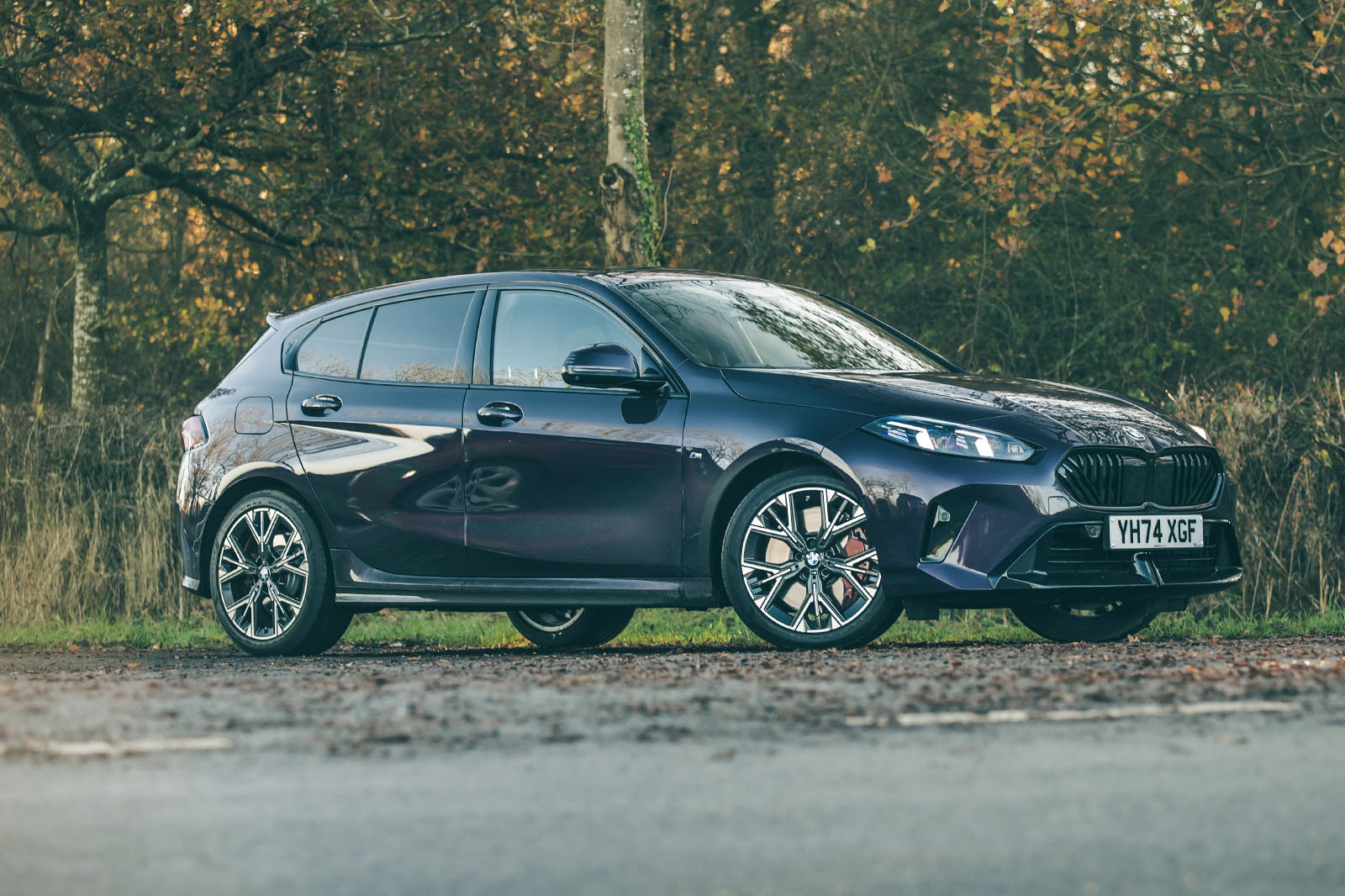Just like the exterior, the new car’s cabin architecture is very apparently derived from that of the old one, making the typical hatchback hip point and semi-recumbent driving position feel familiar. So too are the locations of the instruments and controls and the levels of accommodation.
The car remains a mid-sized option in a class with bigger hatchbacks like the Skoda Octavia at one end and smaller ones such as the Peugeot 308 at the other. It offers more front- and back-row leg room than the Volkswagen Golf eHybrid that we measured recently, but it has less head room in both rows. In the case of the 120 and 123, the 1 Series also loses some boot space to the 48V hybrid battery, cutting that from 380 litres to a less than competitive 300 litres. The M135 retains its 380-litre space.
As is typical of BMWs, it provides well for longer-legged drivers and has plenty of steering column adjustment range, although you need to spec either the £415 'Active seats' or £650 M Sport seats in order to get lumbar support. The latter are very comfortable and have very good lateral support, without being as extreme as the carbonfibre seats in the senior M cars.
The old 1 Series’ instrument cowl has gone, and likewise its physical heating and ventilation controls on the centre stack, with many secondary controls moving to the ‘Curved Display’ that integrates instruments and multimedia functions into one digital installation. Also missing is the car’s old iDrive physical cursor controller (see ‘Multimedia’ section below).
Owners get new multi-coloured ambient lighting features (colours change according to driving mode), a racier-looking M Sport steering wheel and nice M Sport-coloured stitching on the dashboard. This is a ritzier interior, certainly, but in terms of its layout and general usability while driving, it’s debatable if it really has progressed.
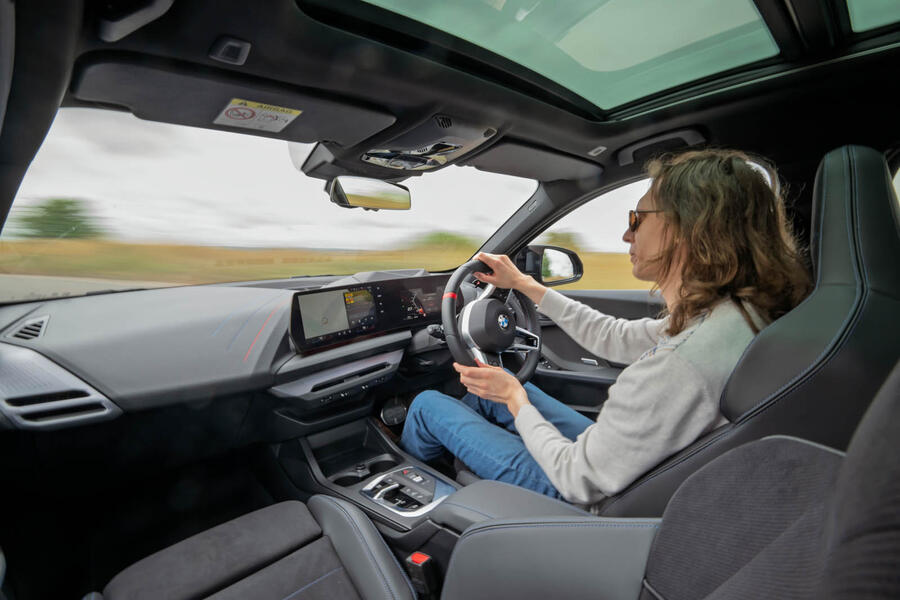
Multimedia - 3.5 stars
The 1 Series has had much the same reworking of its multimedia system here as the related X1 had in 2023. The new Curved Display provides instruments on a 10.7in screen and multimedia functions on a 10.3in central screen. But the iDrive-style physical menu controller on the centre console is gone, as are the physical heater controls, leaving you little option but to use the touchscreen.
A select few menu shortcuts appear on the screen’s right-hand margin, which help usability. Temperature controls are permanently displayed, and you can put particular functions (ADAS system toggles, for instance) as shortcuts that are accessed via one downwards swipe. There’s also top-layer, quick-access navigation on the home page, which is useful.
The infotainment is also connected, so you can download upgrades or, with a BMW Digital Premium subscription, use various music apps, news services and video streams, and you can even download games: yes, you can now play Uno on your 1 Series' touchscreen. There’s also Apple CarPlay and Android Auto connectivity. More usefully, BMW's built-in navigation is both very clear and very up to date on points of interest and the traffic situation ahead.
But we do miss BMW’s cursor controller, which made it easier to scroll around a menu while glancing up and down from the road.





